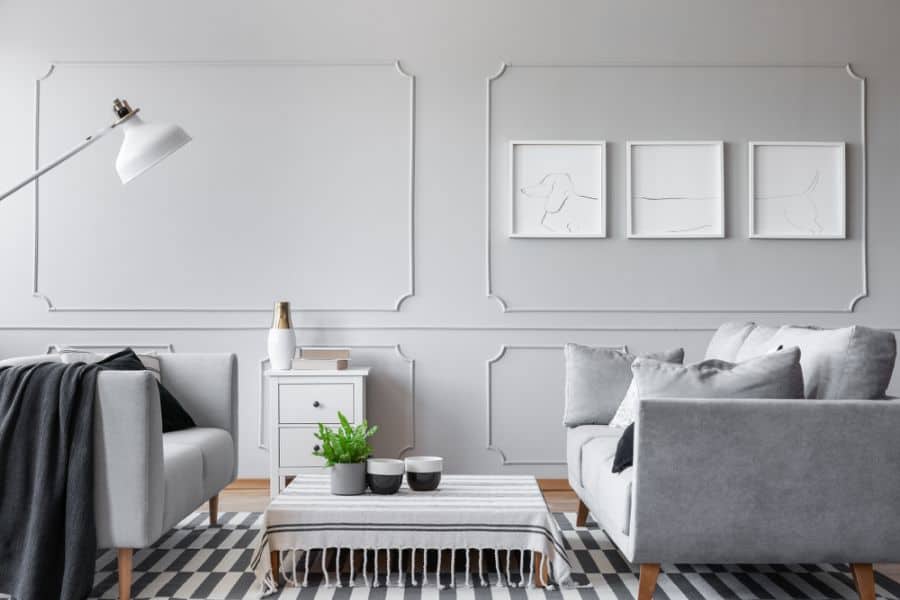
65 Living Room Paint Color Ideas
The living room is the central room in your home. How you decorate this room will say a lot about you and your family’s personality and identity. The paint you choose is one of the most important elements of the room. It can set the tone for the rest of the interior decor. To help out, we have come up with the best living room paint color ideas to make sure your home fits your vibe.
You can choose a living room paint color based on what you like. But this may not be the best approach. Of course, you should choose a color that appeals to you, but the living room color scheme that you choose also needs to fit well with the general interior decor of your home, especially the decor in the living room.
Think about the energy and feeling you want to evoke in the room. Then consider these living room paint ideas to find the perfect color palette for your living room color.
See more about - 68 Living Room Decor Ideas
1. Exploring Accent Wall Living Room Paint Ideas
Painting your living room all one color can be overwhelming or boring, depending on the color you choose. For example, painting all of the walls a grey hue could look dull and lifeless. Choosing a vibrant pink, green, or blue could be too much color for your tastes. Vibrant color is rich in hue and only becomes more intense with bright light. However, if you pair the grey with one of the vibrant colors, you could have the perfect color combination of neutral, calm grey walls with one bright accent wall.

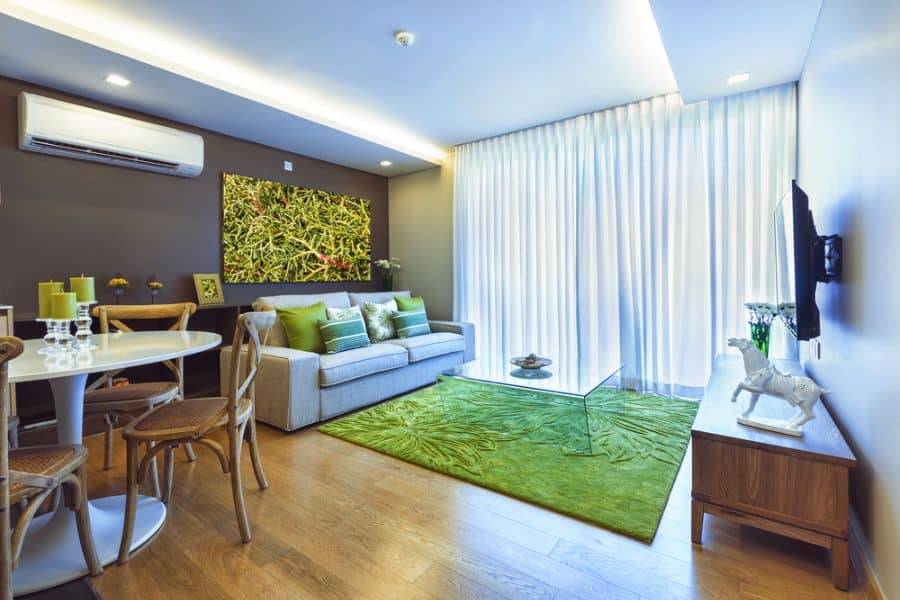
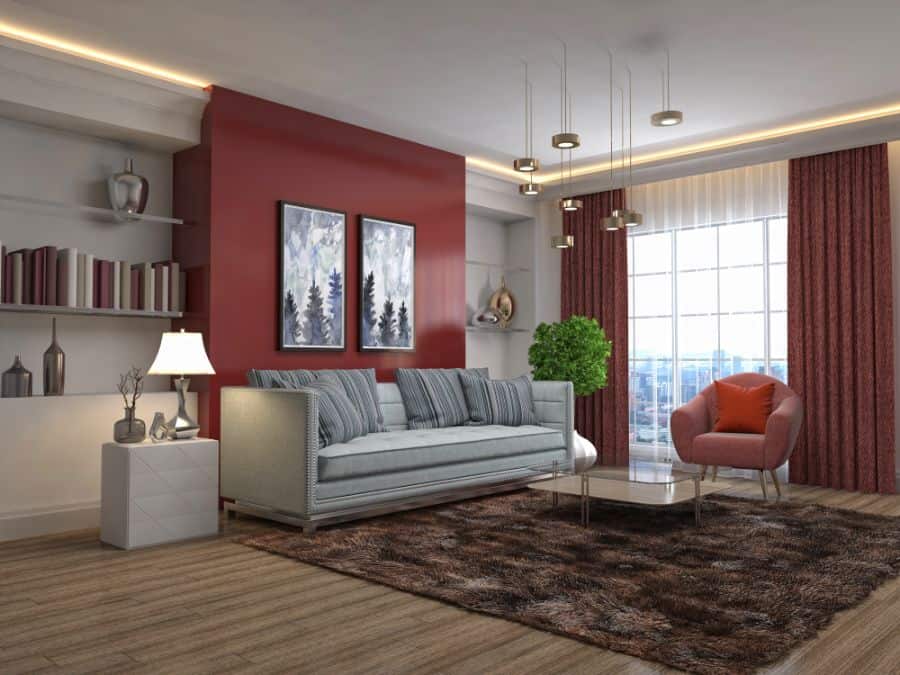
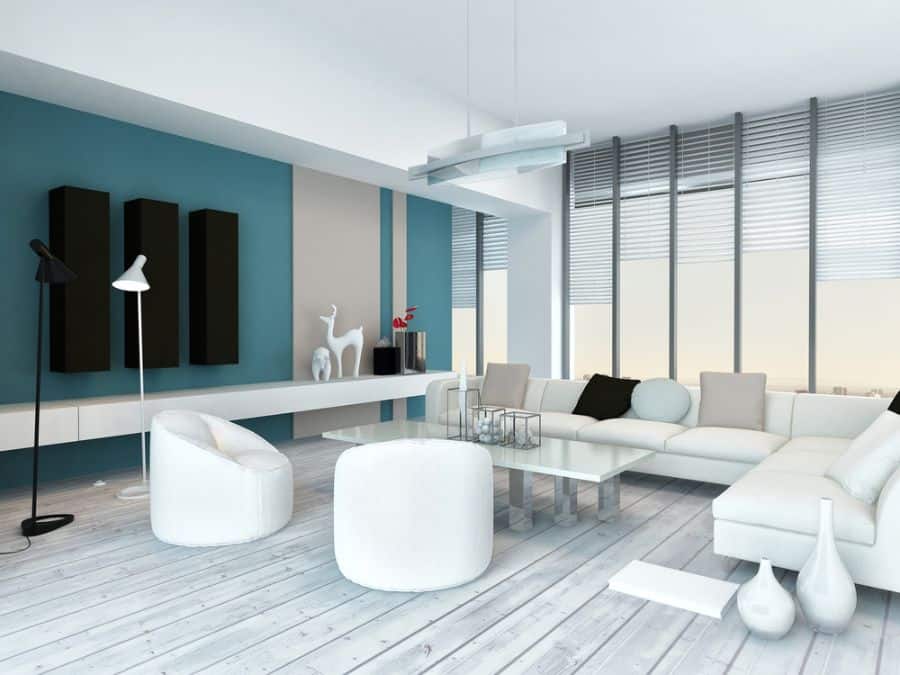
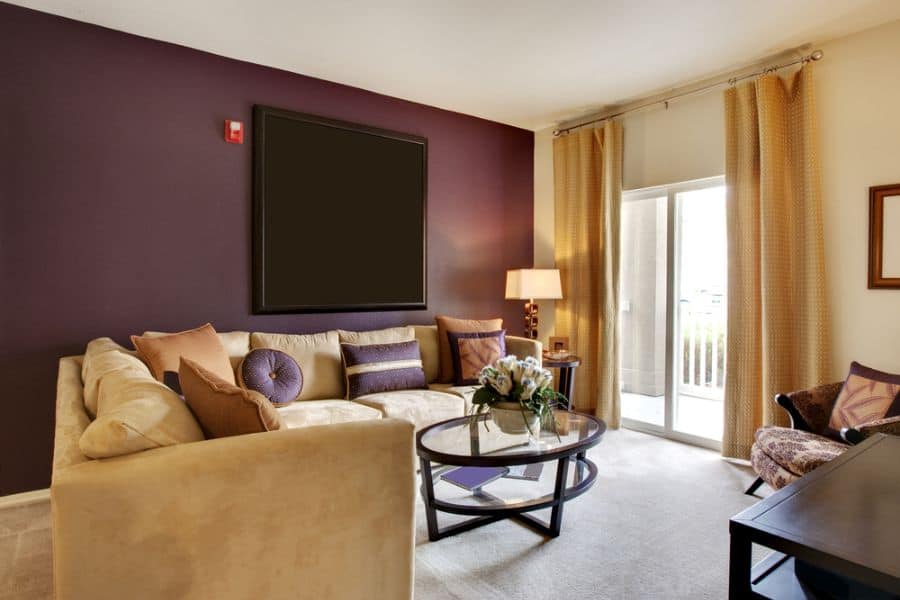


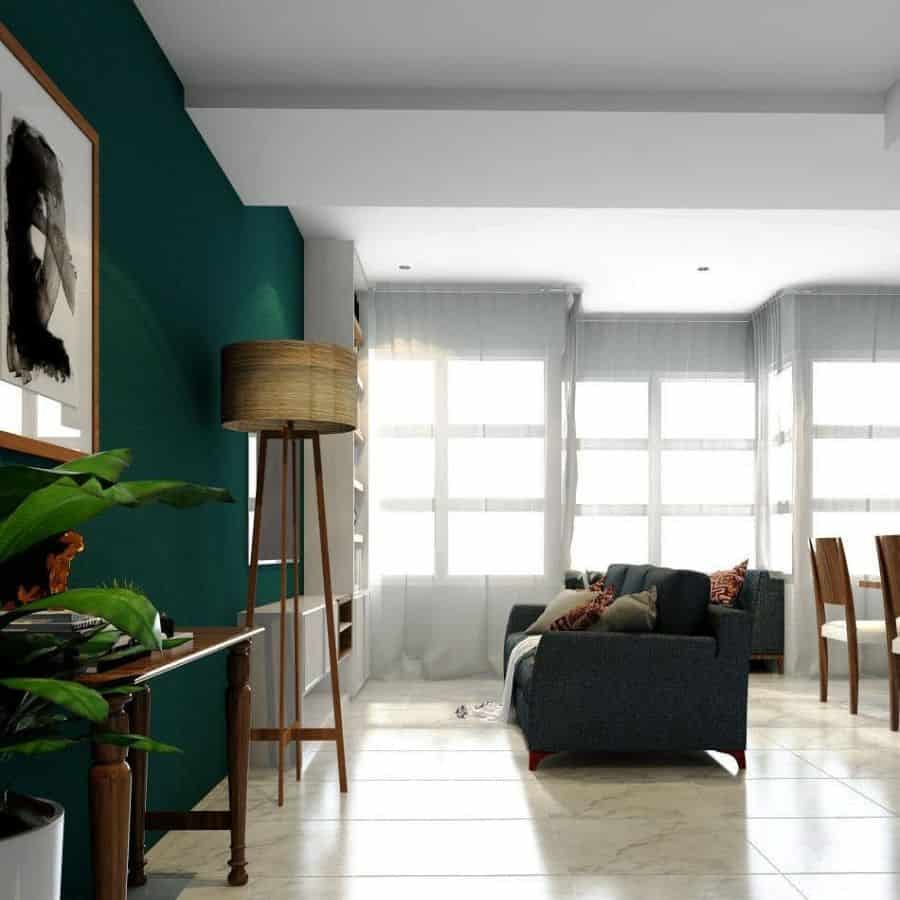
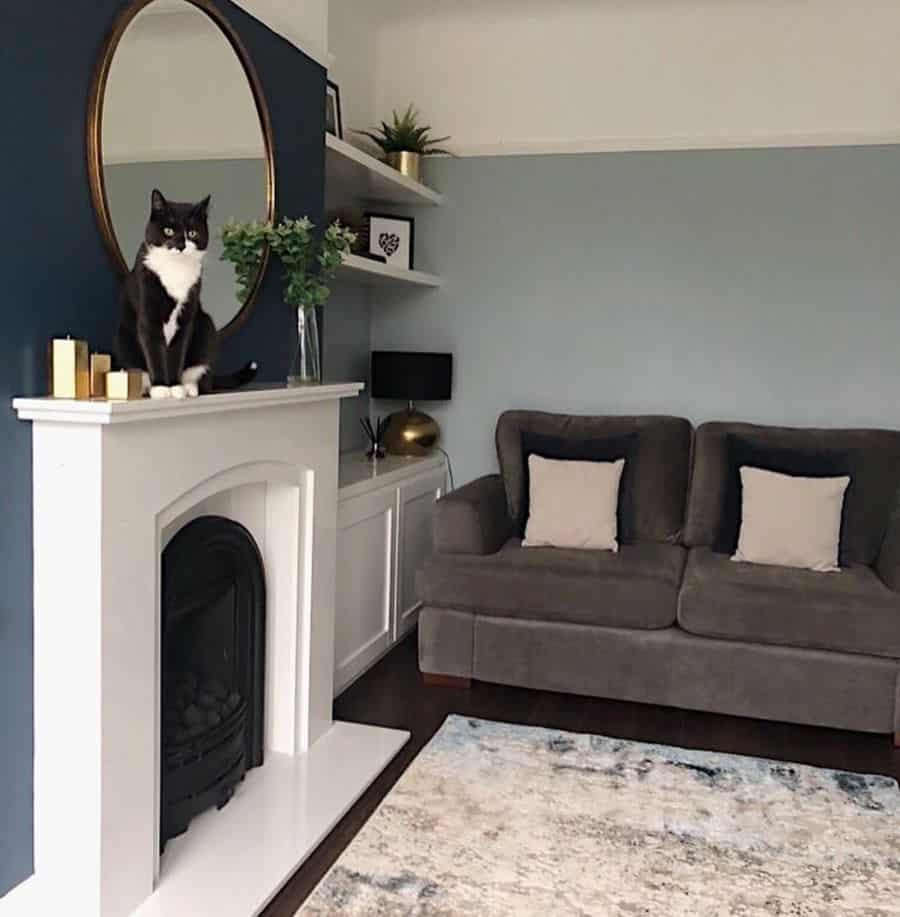
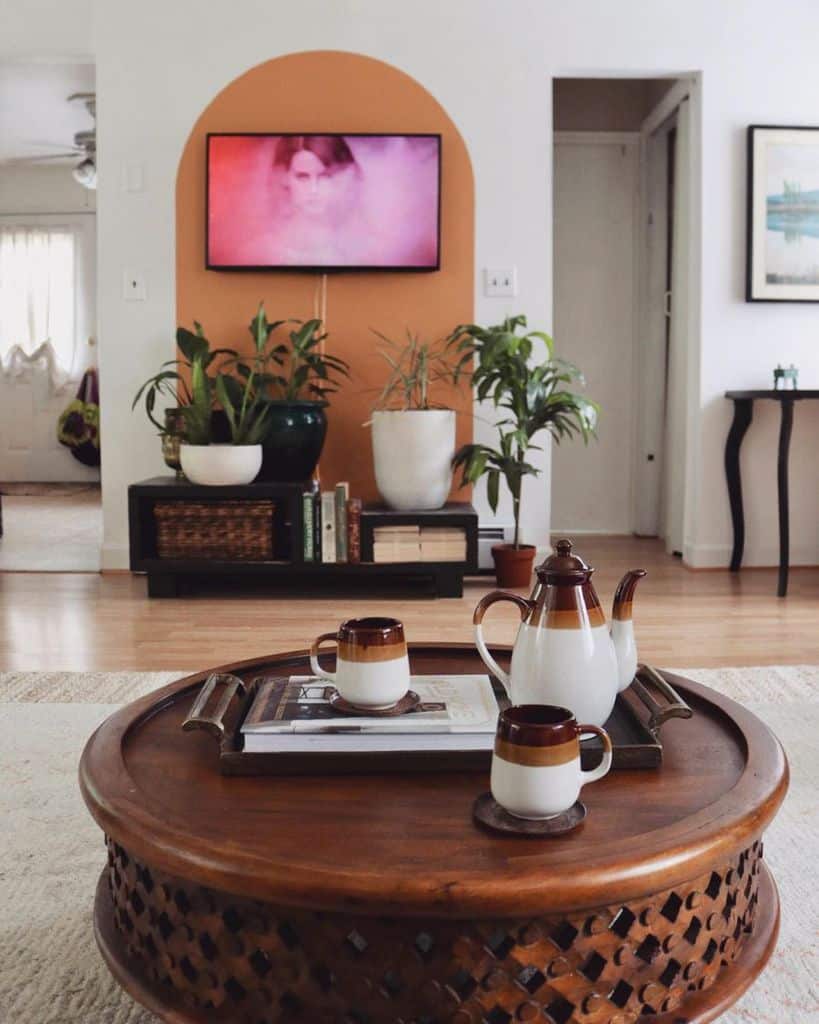
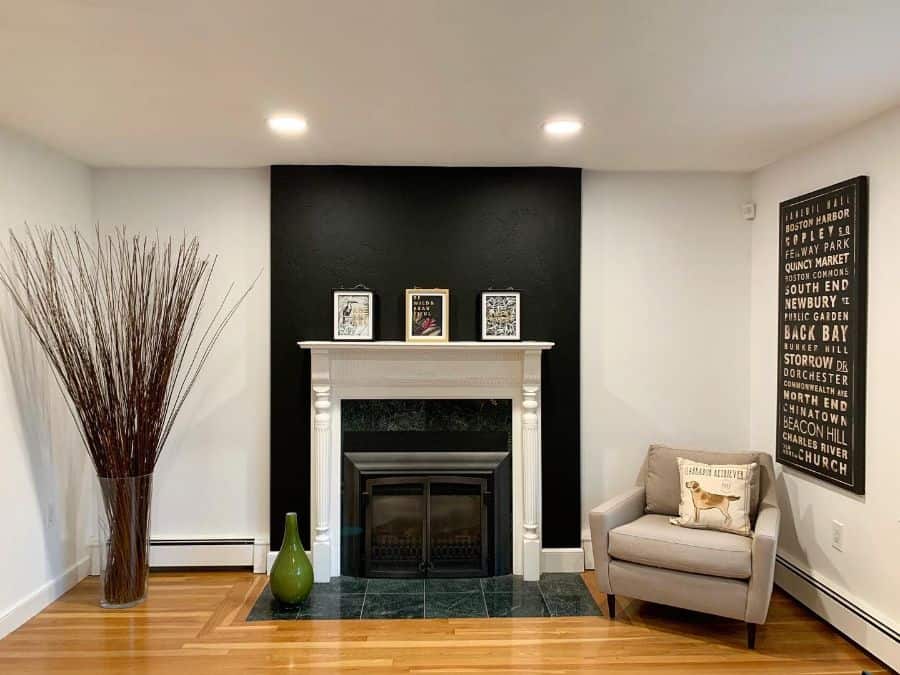
2. Embracing Vibrant Hues
Bold colors are ones with rich hues and can be called vibrant. They are colors like peacock teal, canary yellow, tangerine orange, fire engine red, or even void black. You have two options when painting with these colors. Either keep them limited to an accent wall or commit fully and paint all of the walls.
If you choose a bold color for your accent wall, then you can make bold furniture choices. This will balance the wall and tie everything together. If you decide to paint all of the walls a bold color, then limit the decor to more neutral colors and patterns. This will balance the room. Choose wood accents that will give a touch of nature and balance. Try placing a grey sofa in the room for a modern neutral look.
A third option, and one that’s difficult to pull off, is a monochromatic look. Paint the walls with your chosen bright color. Then use that same color for everything else in the room. Try to find the same color in different materials. This will add texture, detail, and interest to the room.
What’s nice about bold and bright colors is that you can use them in both a large and small living room. The bright color can ground a large room and increase the size of a small room.
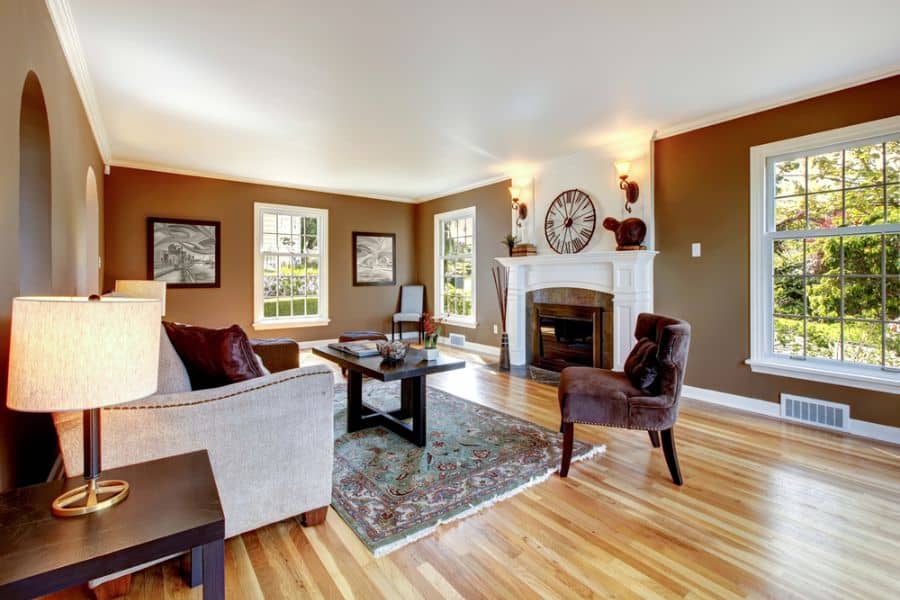
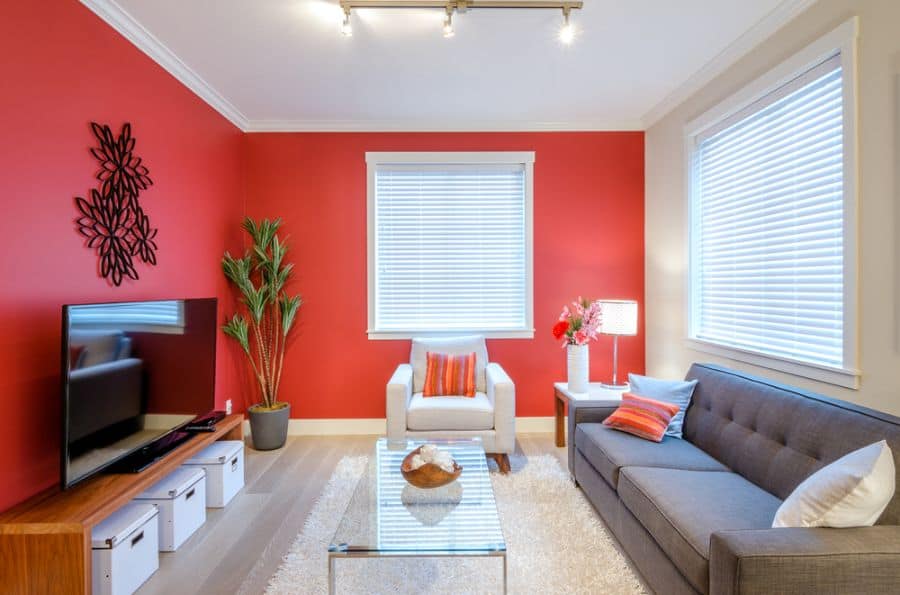
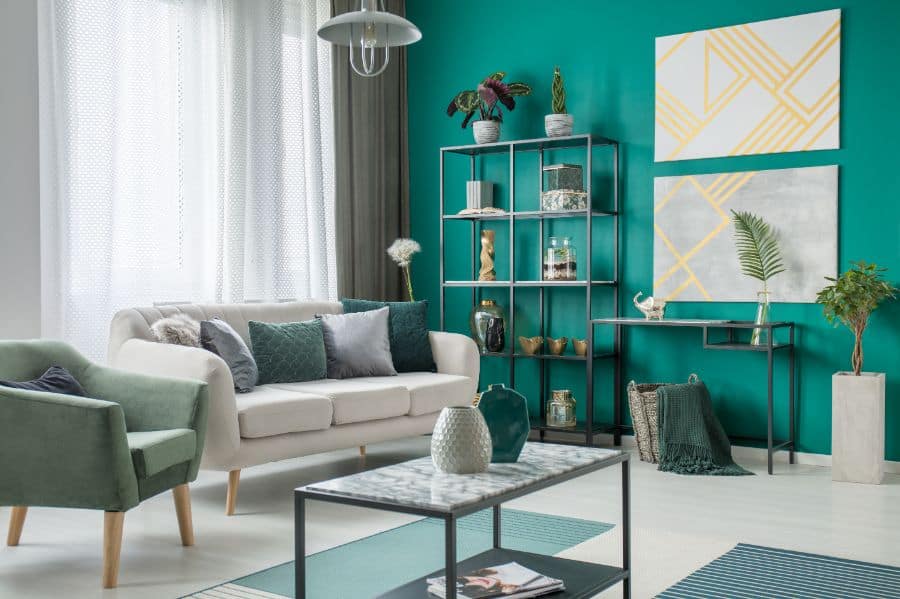
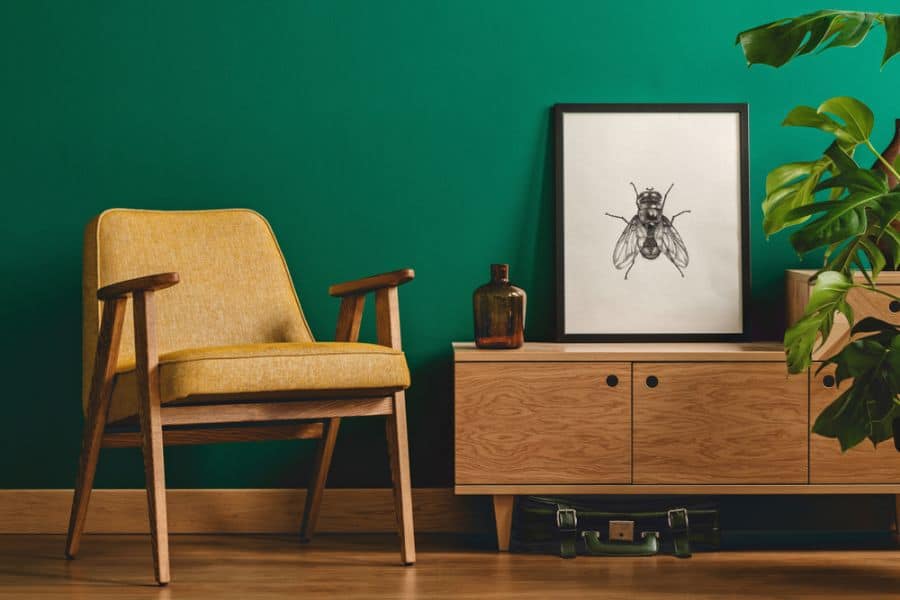
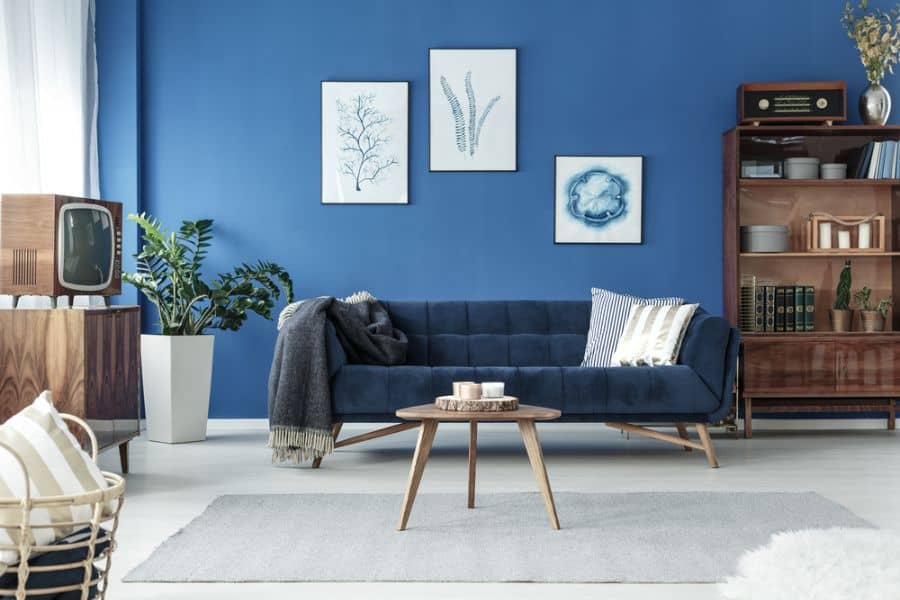

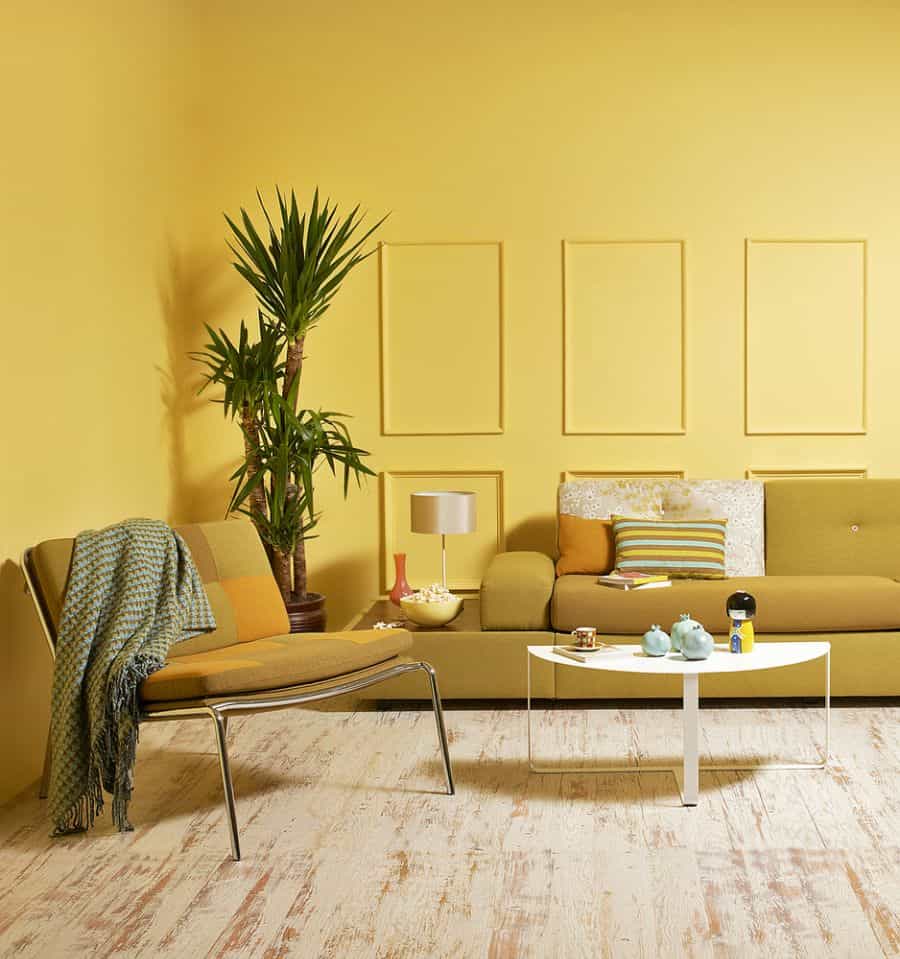
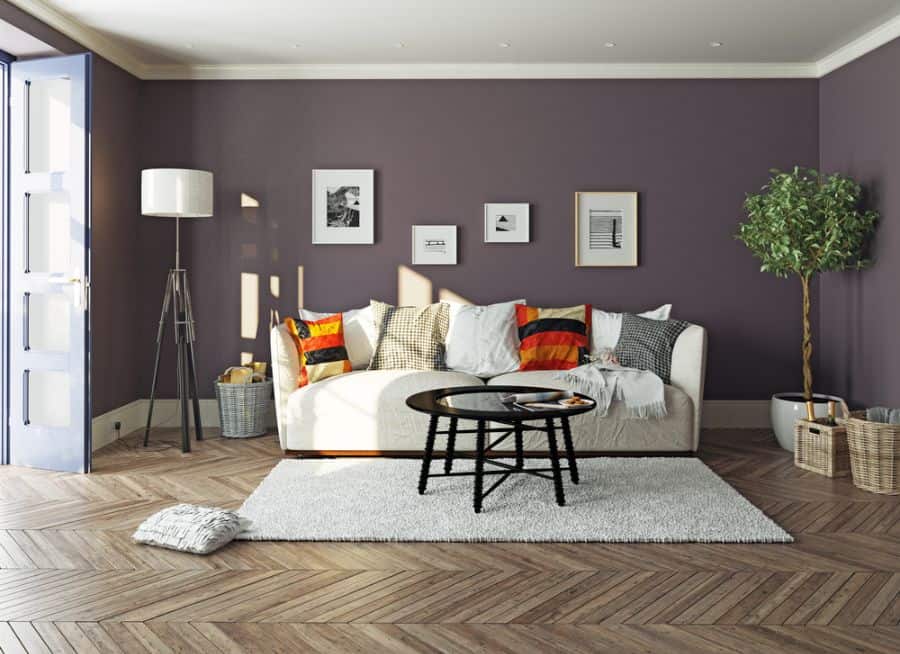

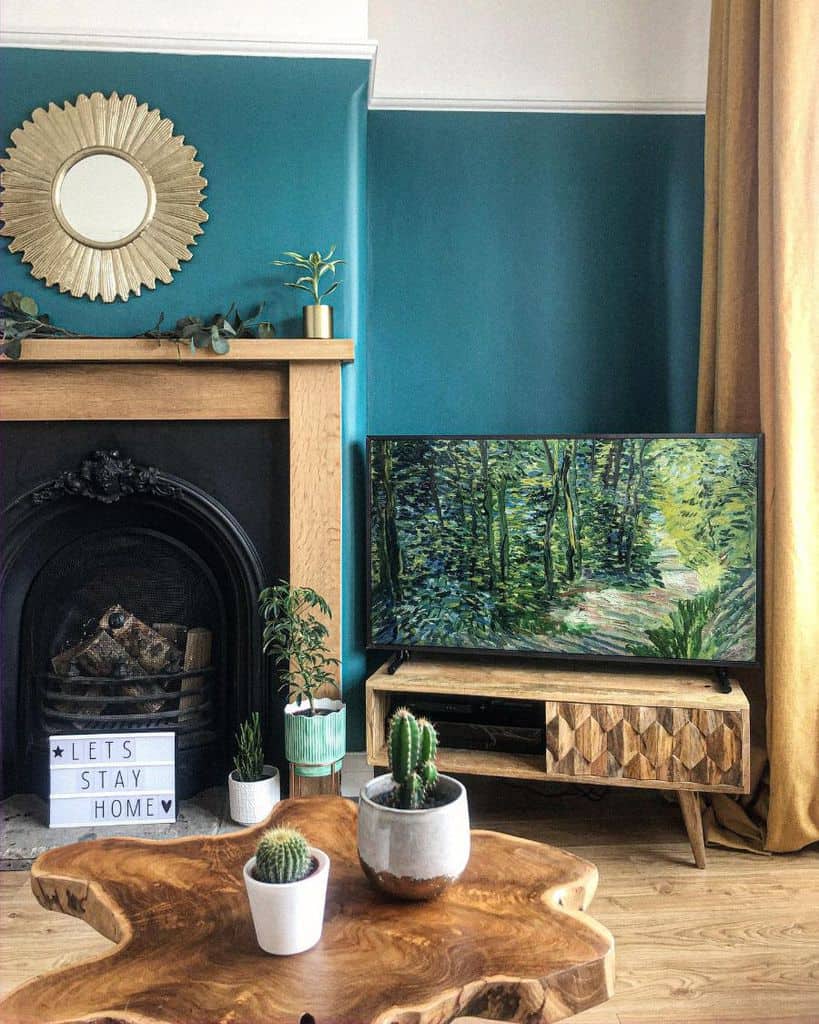
3. Elegance in Darkness
Interior designers used to ignore dark colors when considering living room color ideas. However, modern interior design trends have shown us that you can have a beautiful living room painted a darker shade of navy blue, charcoal grey, black, maroon, plum, or green.
Dark walls will give your living room a sense of masculinity, formalism, and sophistication. To keep your living room from becoming too dark and moody, pair your dark walls with light-colored flooring and furniture. This scheme will balance the color and bring a perceived light into the room.
However, don’t be afraid to commit to a dark shade and decorate with darker furniture. You could pair your dark-colored paint with leather furniture, wood flooring, and sleek metal fixtures and hardware.
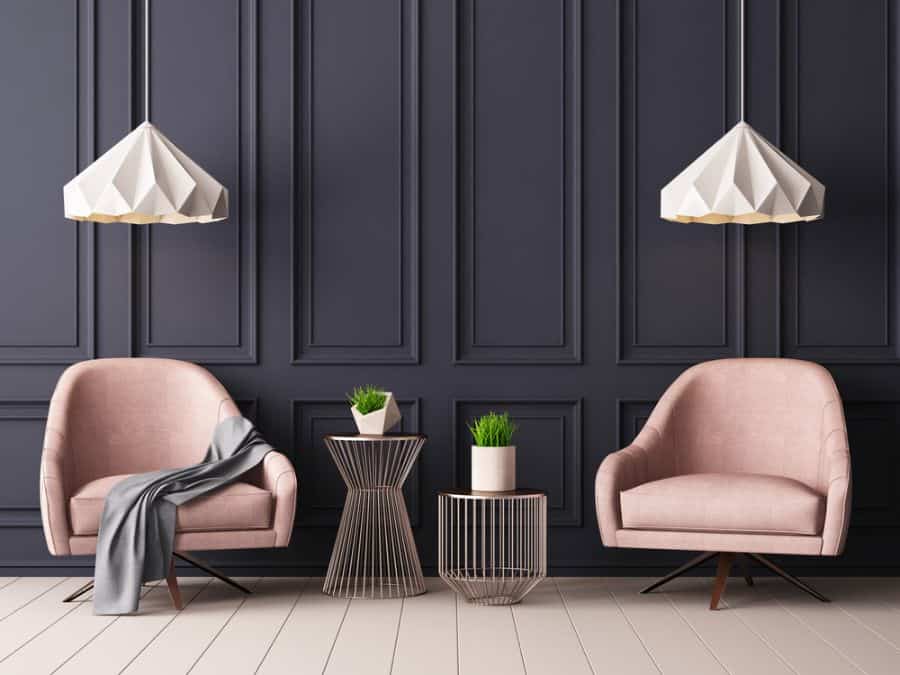
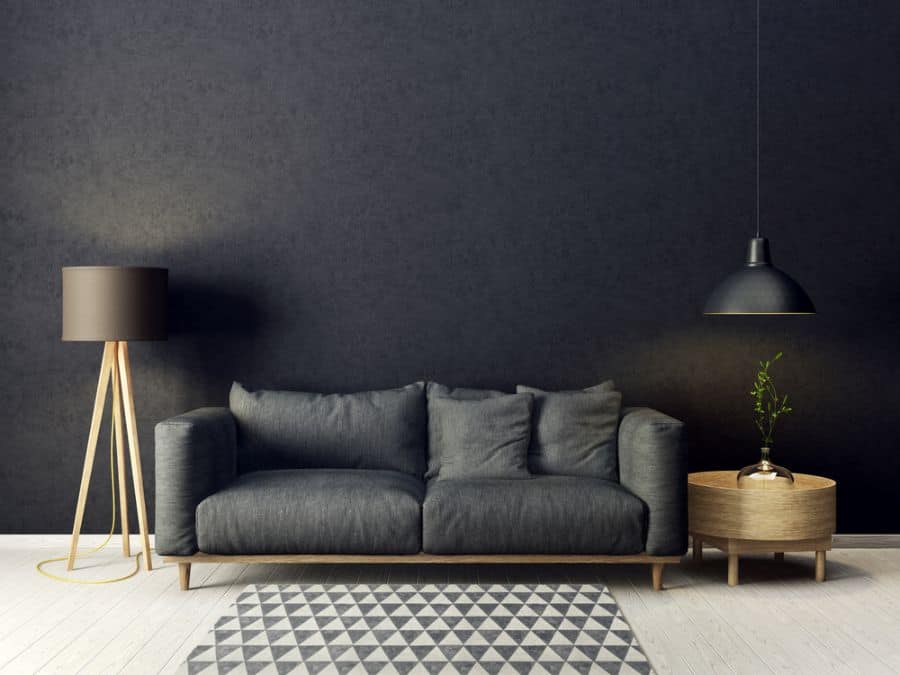
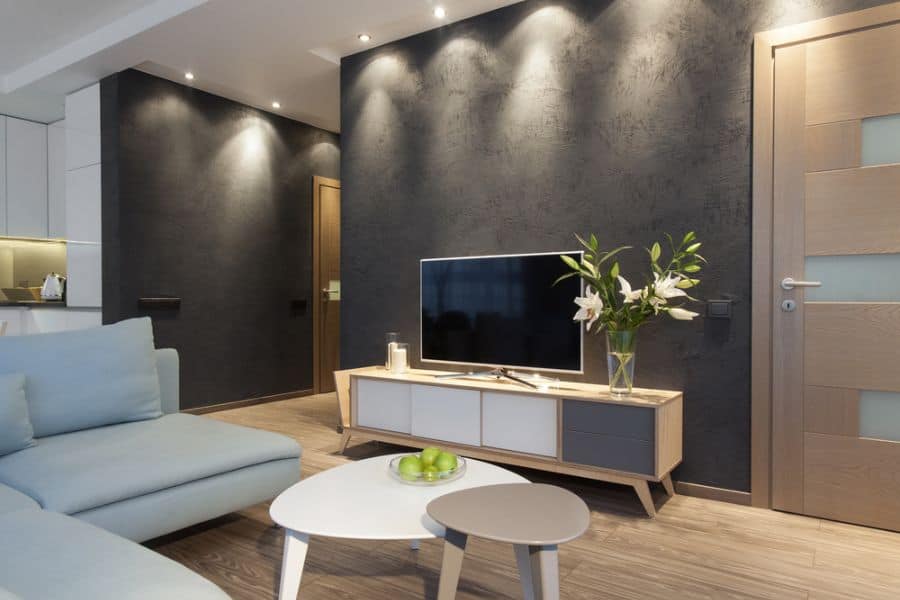
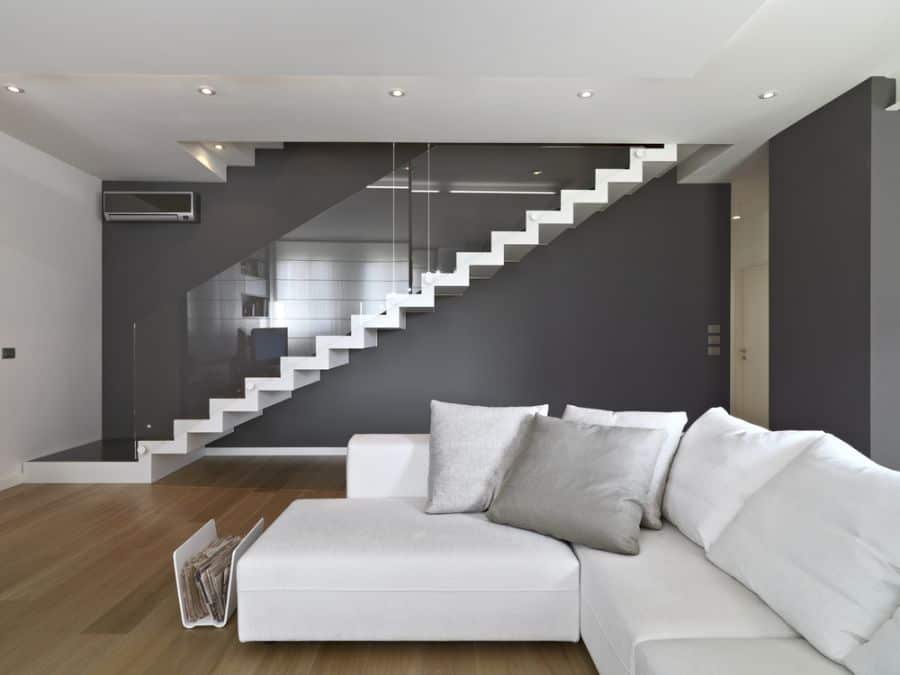

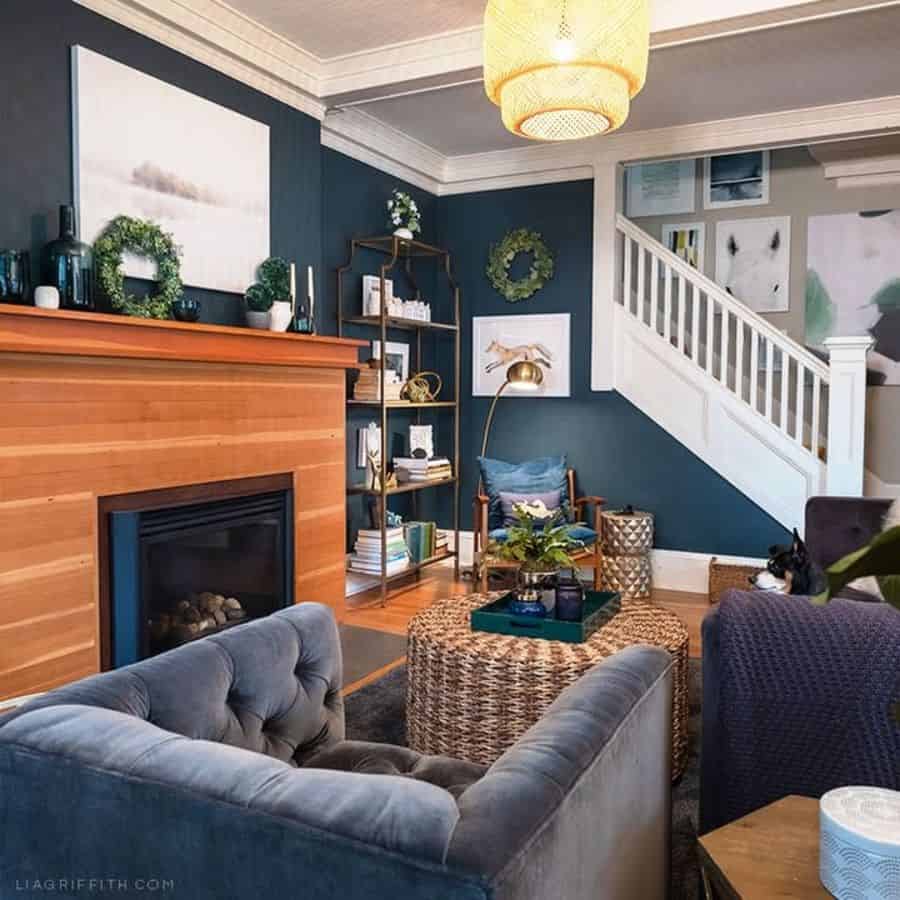
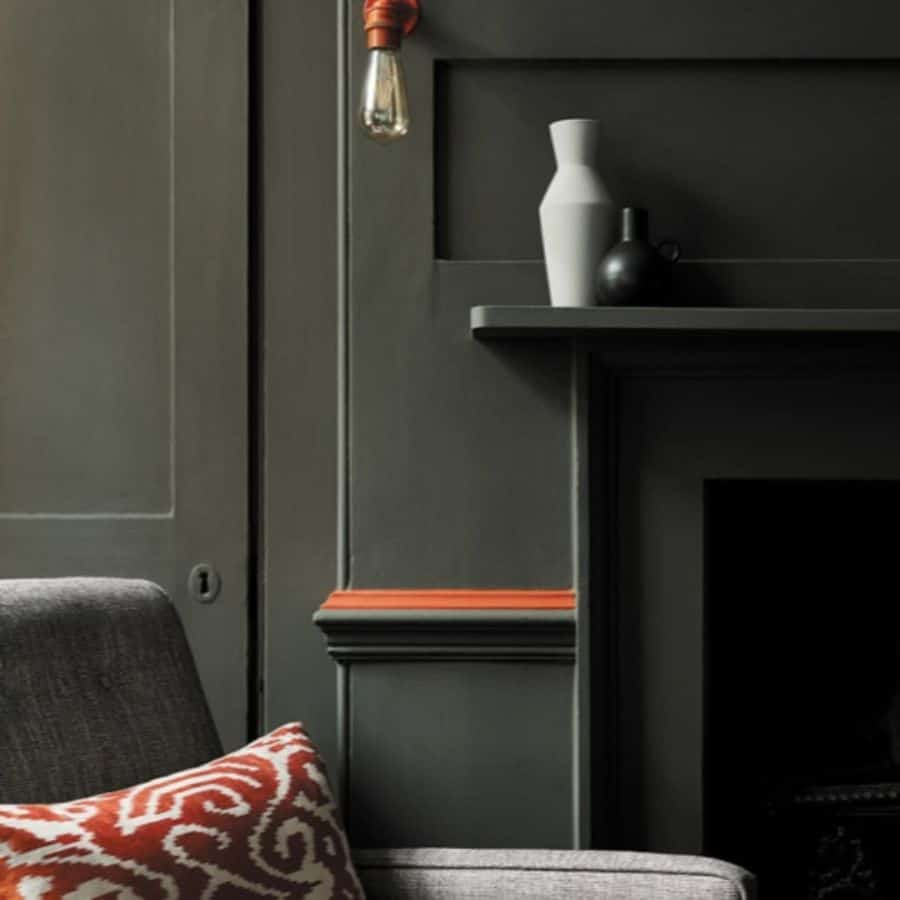
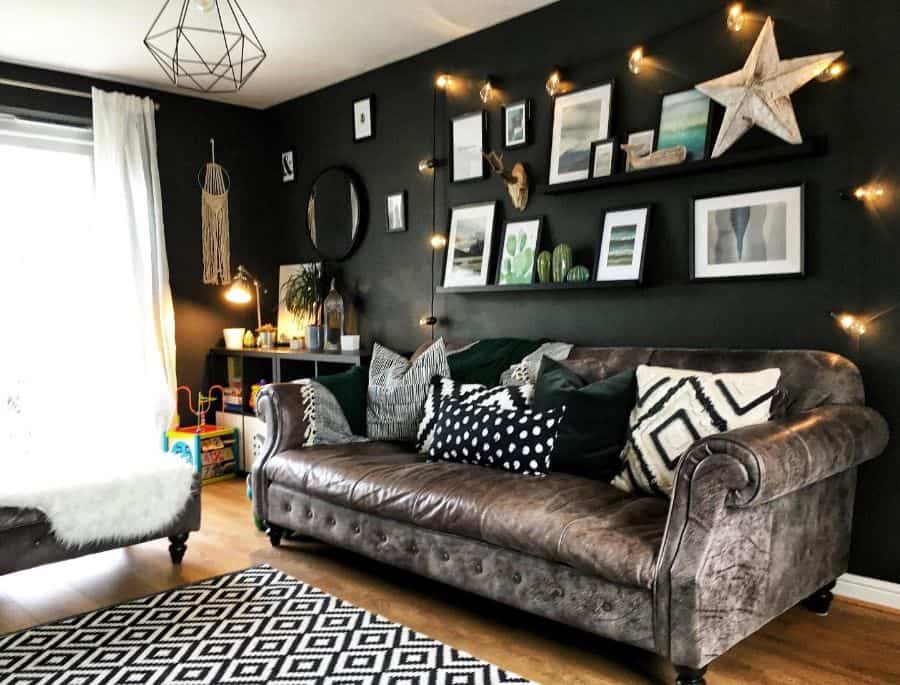
See more about - 53 Best White Kitchen Ideas
4. Subtle Sophistication
If you like the idea of the darker colors but are afraid they’re too intense for your living room, then consider muted colors. These are colors that lack vibrancy. You could have all of the same shades and hues that you’ll find in bright, bold, pastel, and dark color options.
The one drawback of muted colors is that they can look a bit boring. But you can balance this with decor that’s more vibrant and bold. Or, you can embrace the “boring” and create a calming atmosphere.
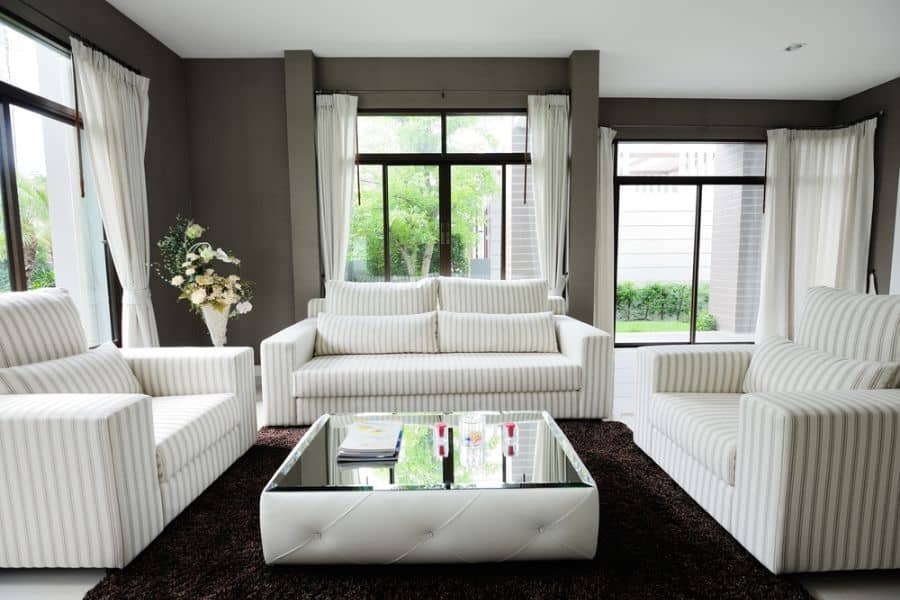
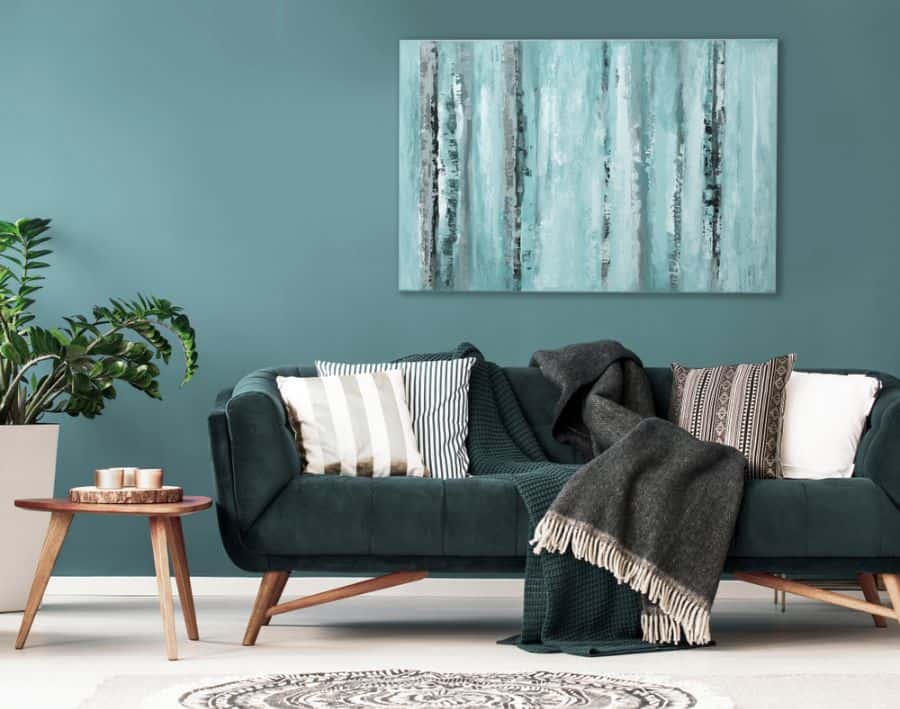

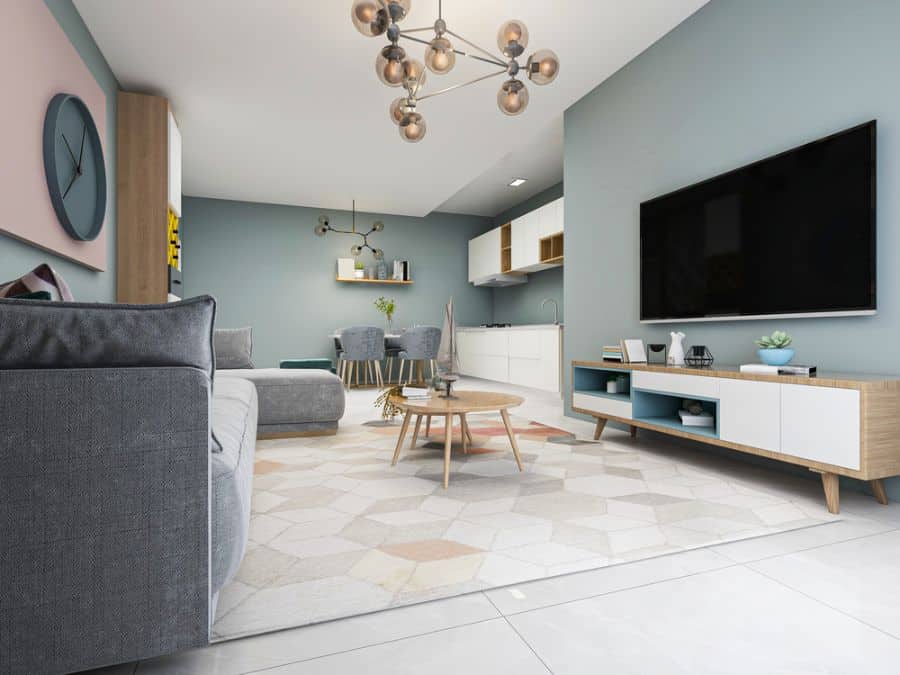
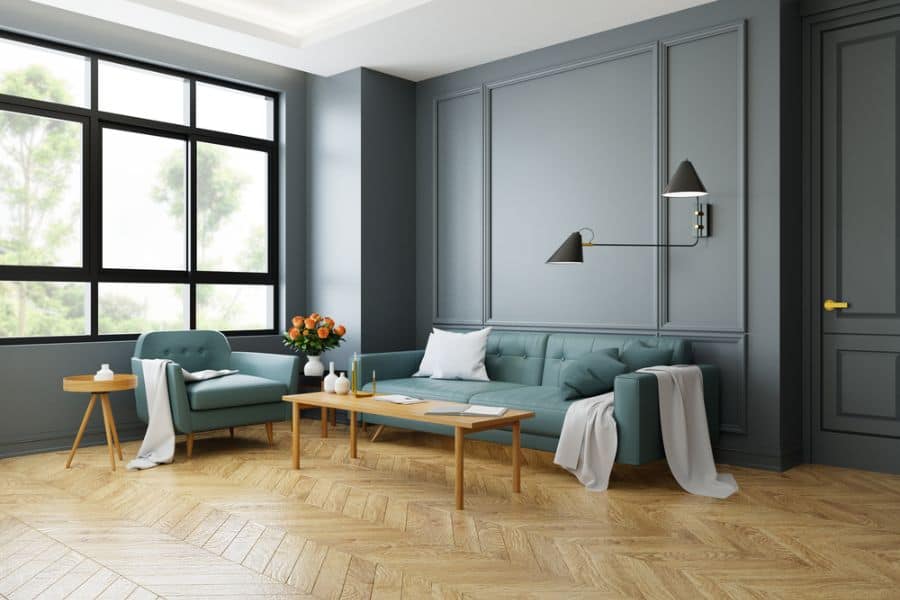
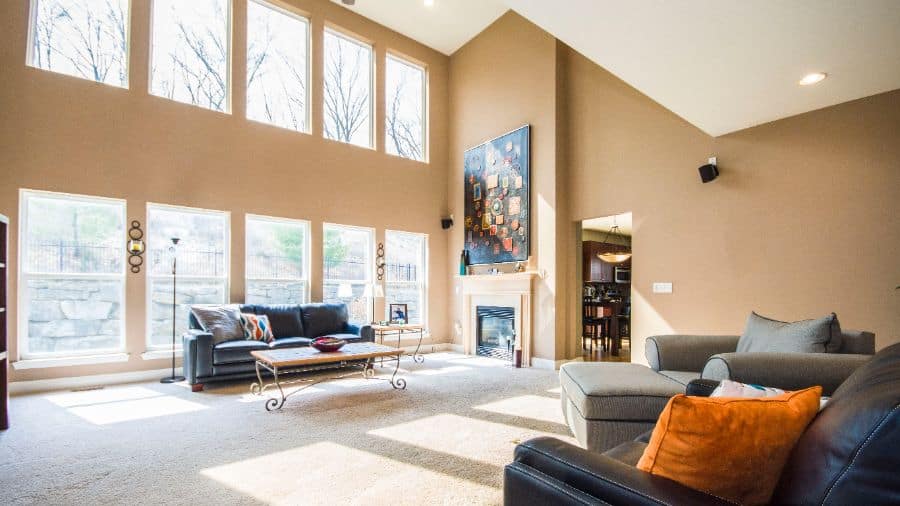

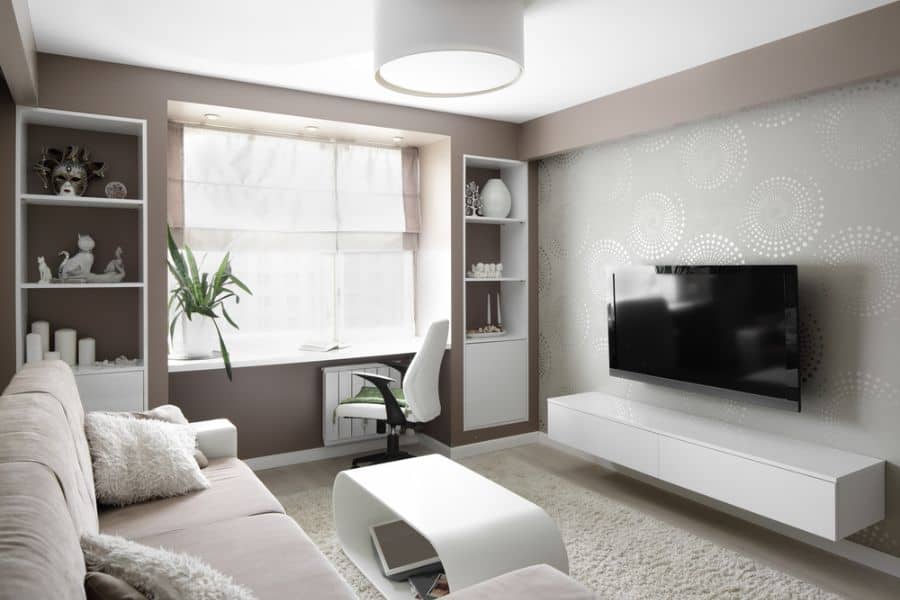



5. Timeless Appeal
You can’t go wrong with neutral living room paint schemes. Neutral paint schemes are light enough to keep your living room feeling bright, add a sense of warmth to the room, and are a perfect canvas for a wide variety of interior design approaches.
Before you commit to a neutral shade, gather a few shades that you like and paint some samples on the wall. This will let you see what they look like in your living room and its changing light throughout the day. You want to choose one that adds warmth but doesn’t look too dark. You’ll also need to consider colors that have more pink, yellow, or orange tones.
Try to add life to the room by choosing decor and textiles with patterns. These patterns will add layers and depth to your room. You should also consider painting the trim and moldings in the room a bright white. This will give the walls a crisp finish and help the room look bigger.
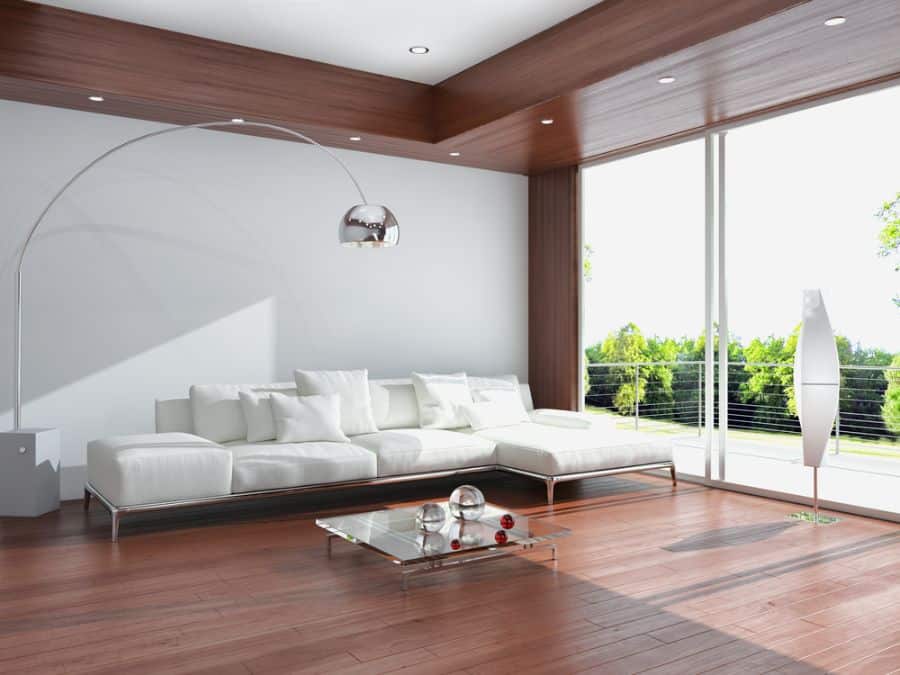
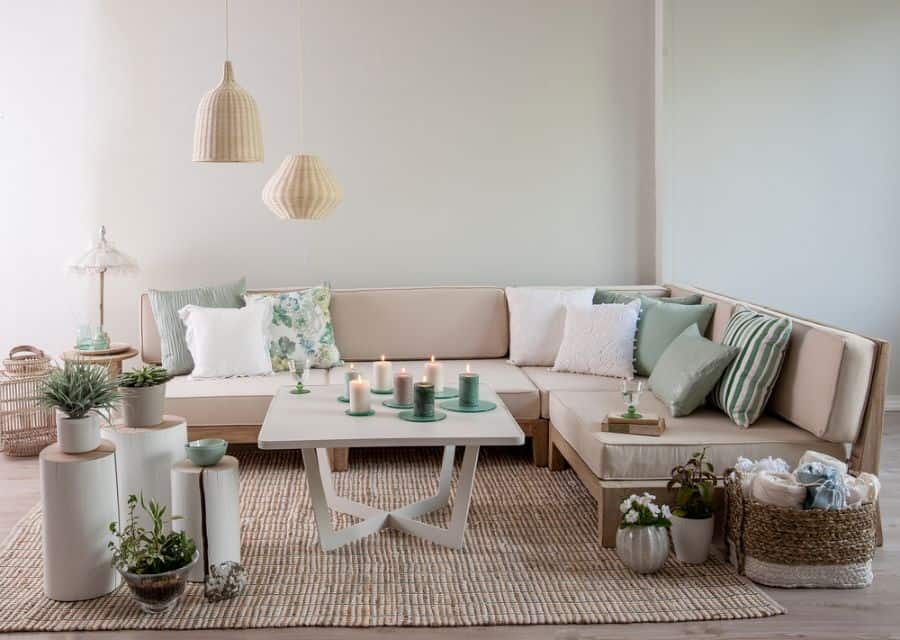

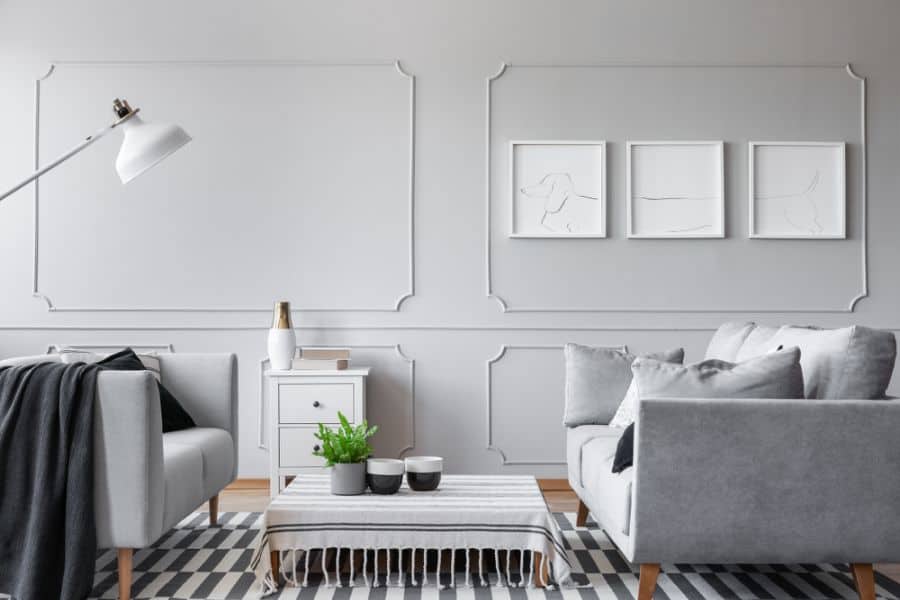
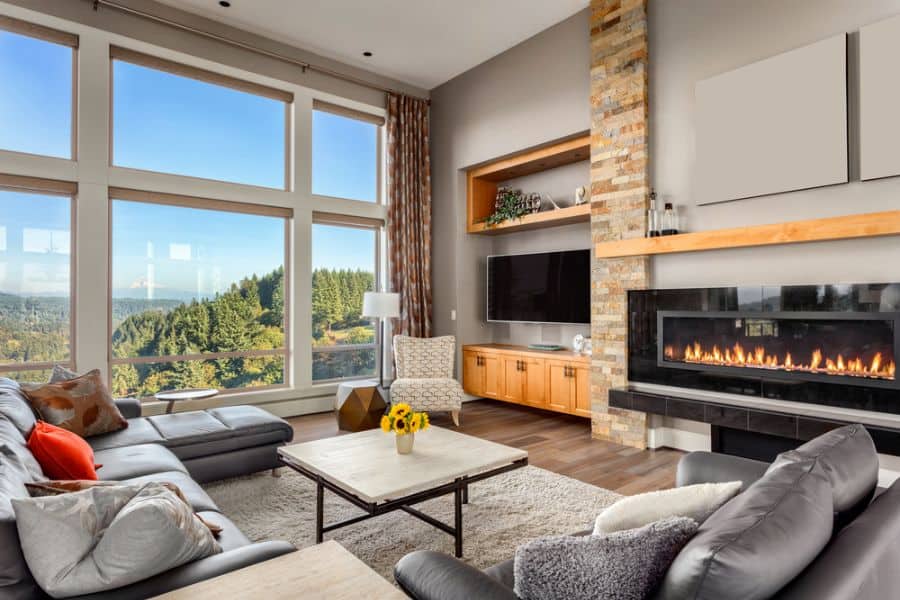
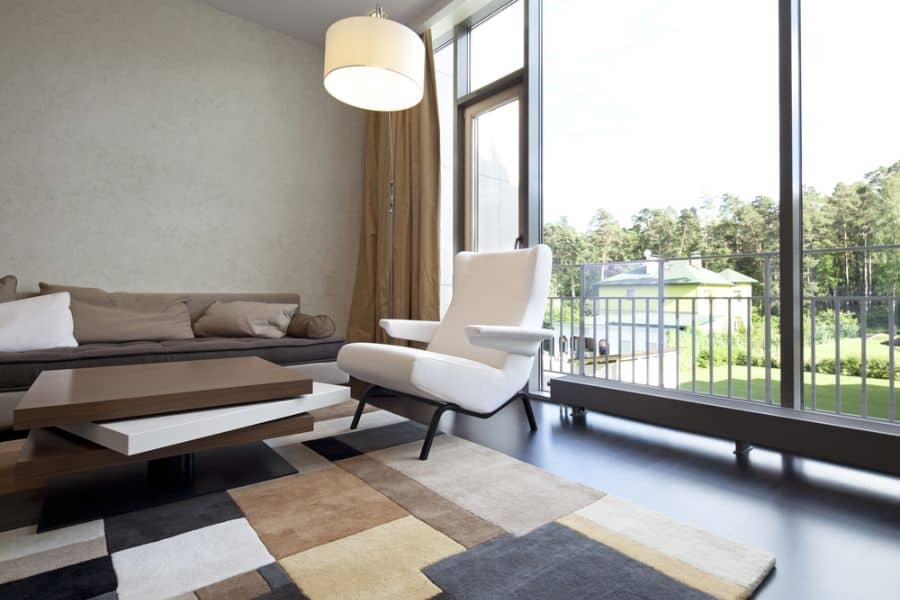
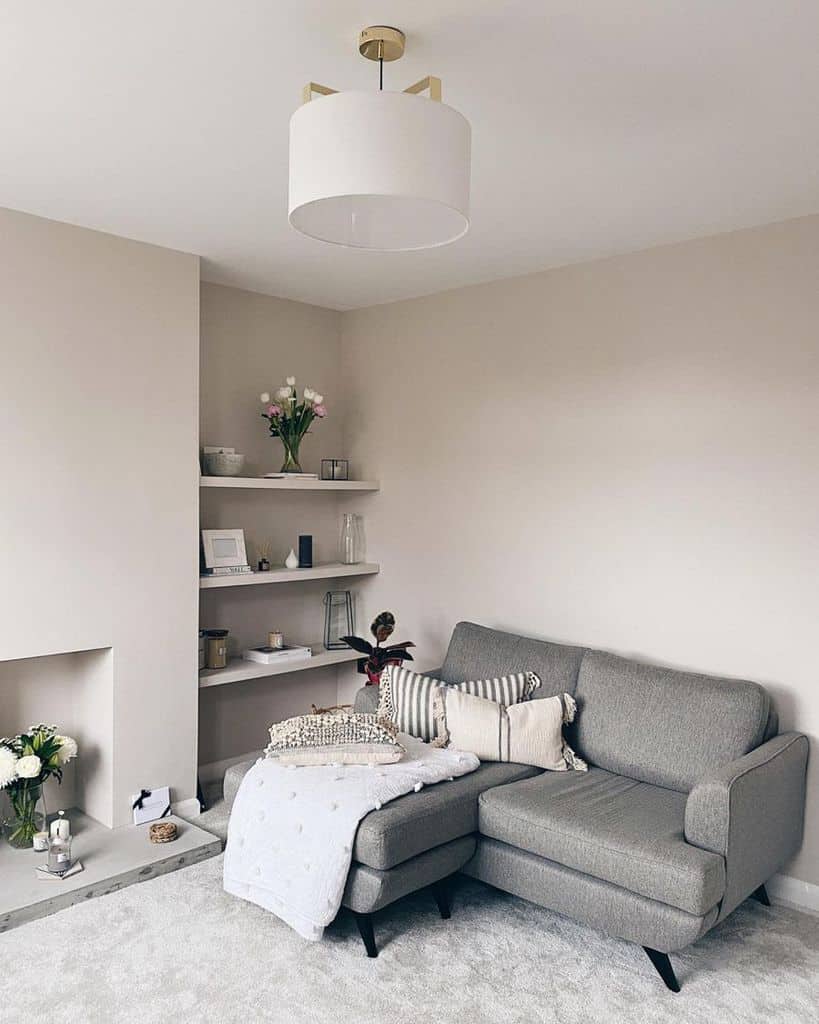


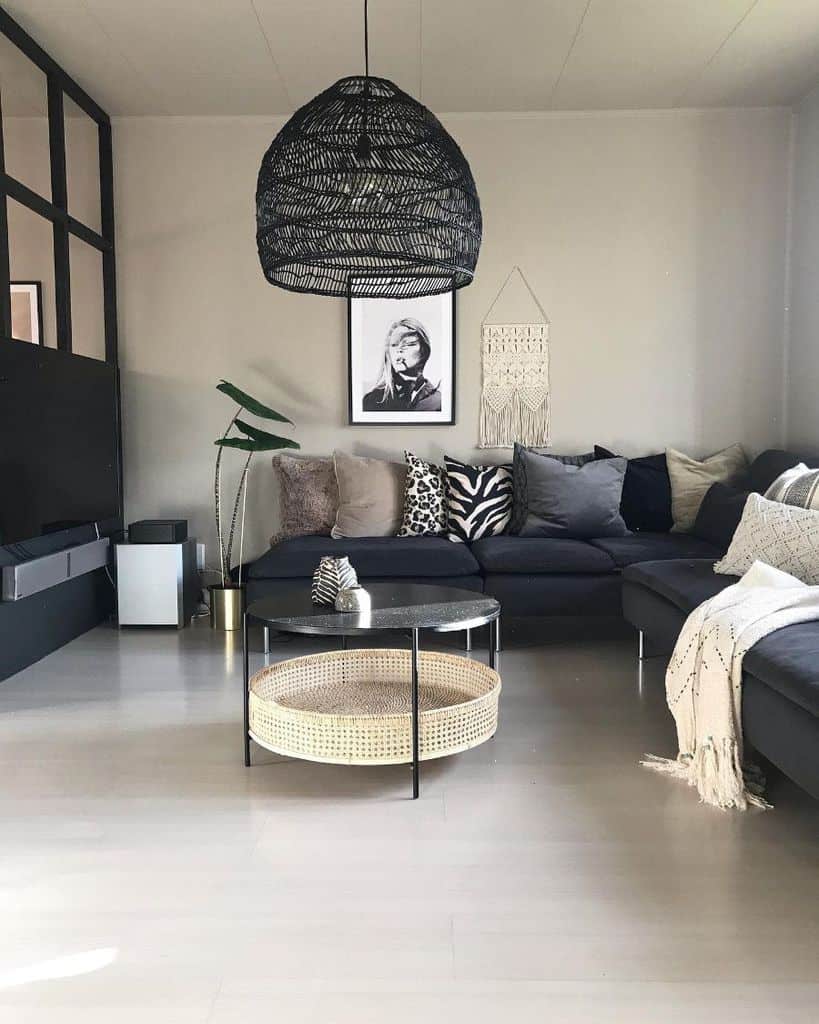
6. Tranquil Pastel Tones
Light colors are perfect for your living room because they add a hint of color without being overwhelming. They also help to keep the room feeling bright and light. Their gentle shades can create a soft background for you to layer bolder pieces in front of. You can also use lighter shades to balance darker wood furniture. Pastel pink and green can look beautiful with darker wood tones and a gold hardware accent color.
If you want to create calm energy in your living room, try pairing a pale blue wall color with white and cream shades. You can balance the lighter colors with a dark accent color of dark brown or navy blue. Use this dark color sparingly in the throw pillows, curtains, or rug.
You can also use pastels to create a funky and retro aesthetic for your living room. Start by painting your walls a pale pink or green. Then decorate the room with a coffee table and sofa in vibrant colors, such as royal blue, sunflower yellow, or emerald green. The contrasting colors pair well together; they’re opposite ends of the vibrancy spectrum and on opposite sides of the color wheel.

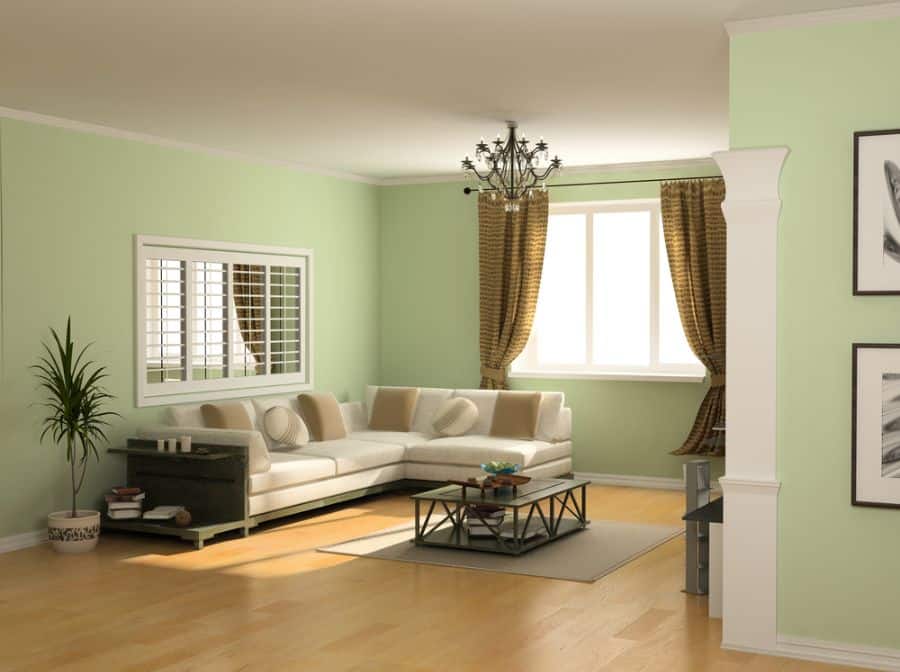

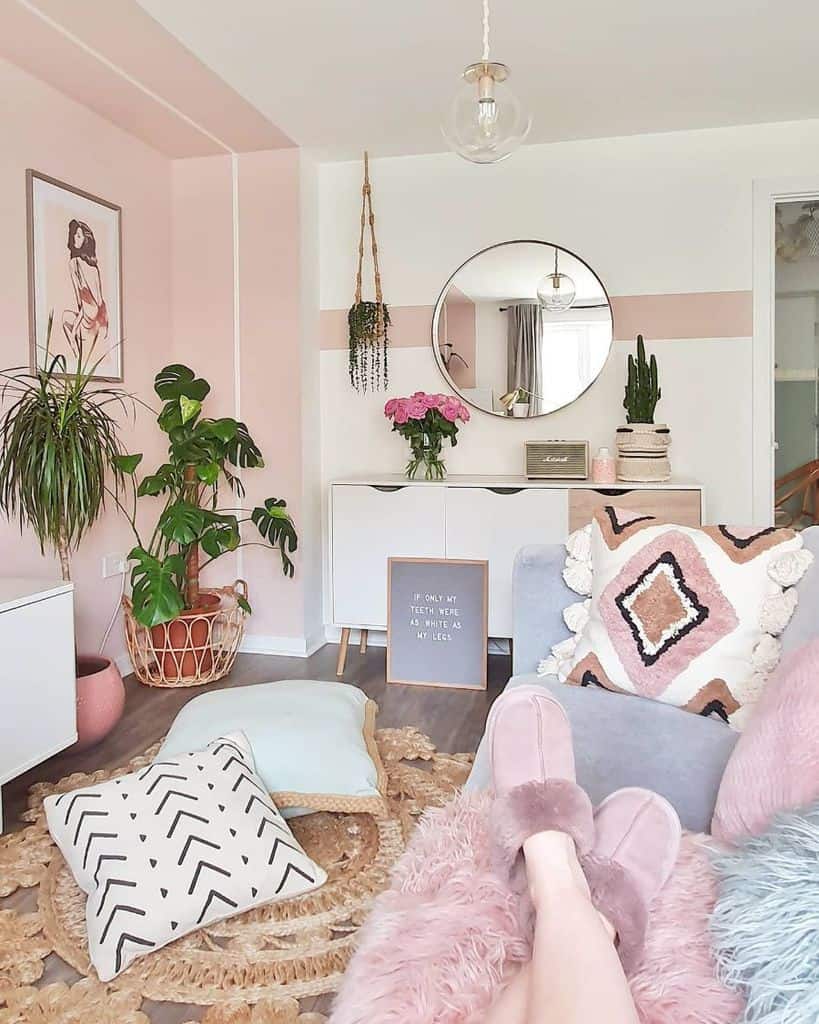
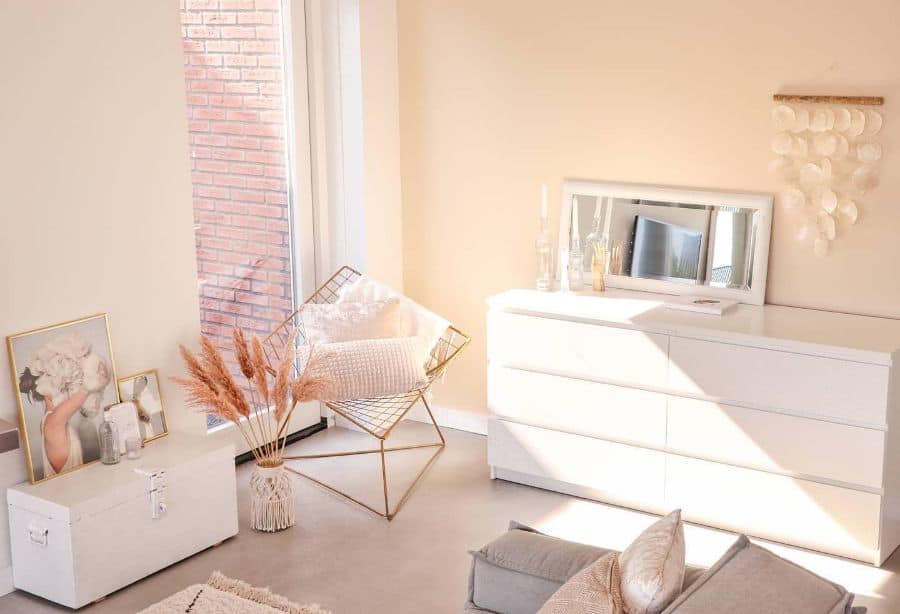
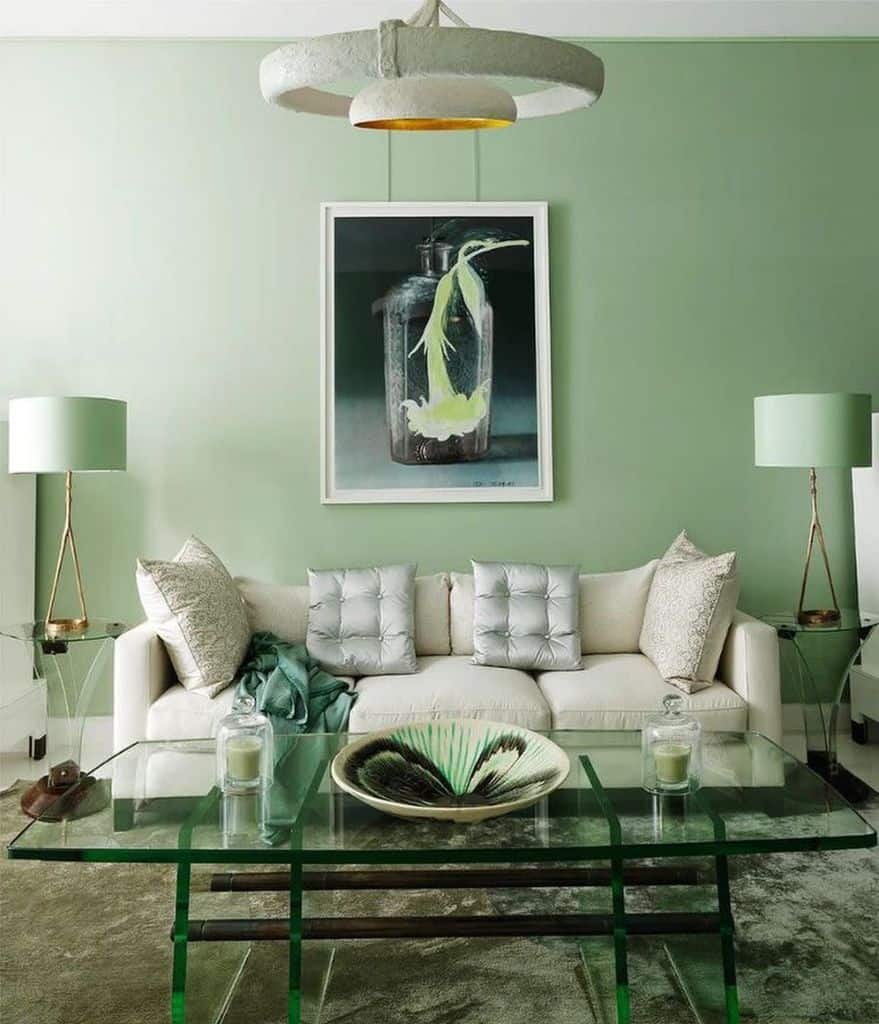
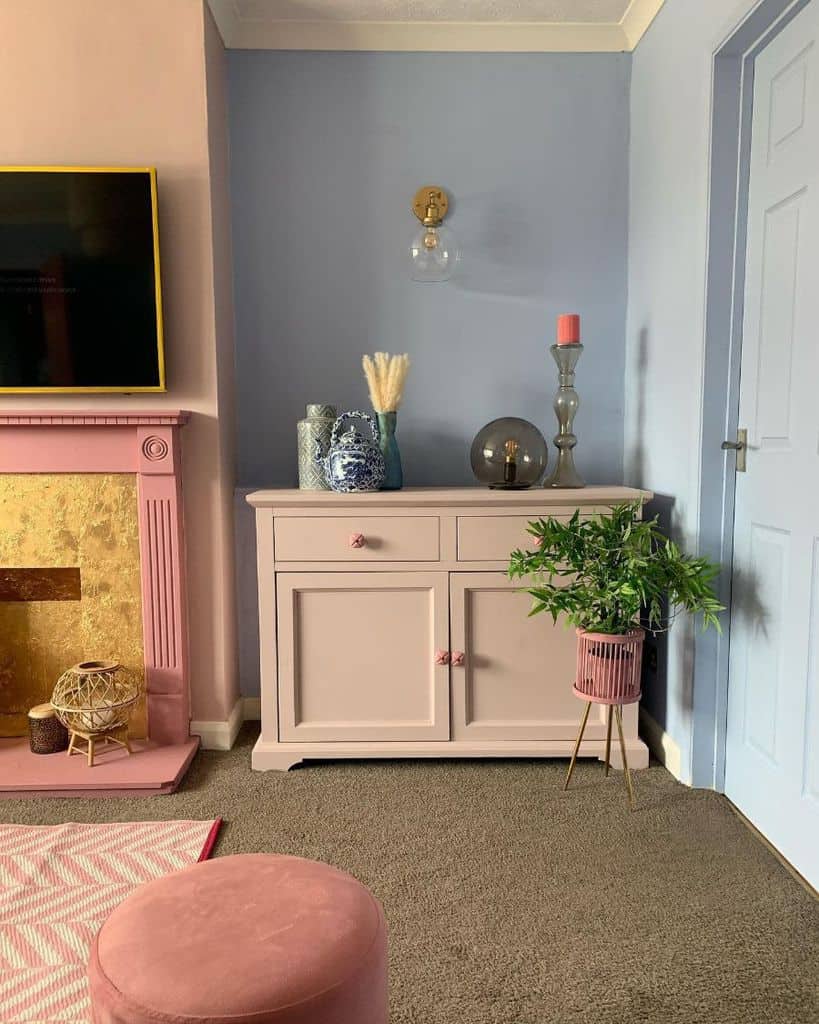

See more about - 48 Best Navy Blue Bedroom Design Ideas
7. Artistic Flair
If you want to paint a pattern on the walls of your living room, start by choosing one wall. If you try to paint a pattern on all of the walls, the room will feel closed in. It could even be disorienting if you choose a particularly detailed or bright pattern.
Once you have your chosen wall, consider the scale of your pattern. You could have a small repeating pattern or a large-scale pattern that takes up the entire wall.
Simple patterns you can do are stripes, squares, diamonds, or some other basic shape. Modern trends embrace abstract patterns or random large shapes that you create with masking tape.
If you’re a skilled painter. consider using a stencil. A stencil will let you create more detailed patterns that would be almost impossible to do freehand.
When choosing your pattern, consider your color scheme, budget, interior painting skill level, and interior design theme. Abstract and geometric patterns look good with modern and contemporary designs. Stripes can look right at home in a rustic or farmhouse living room.
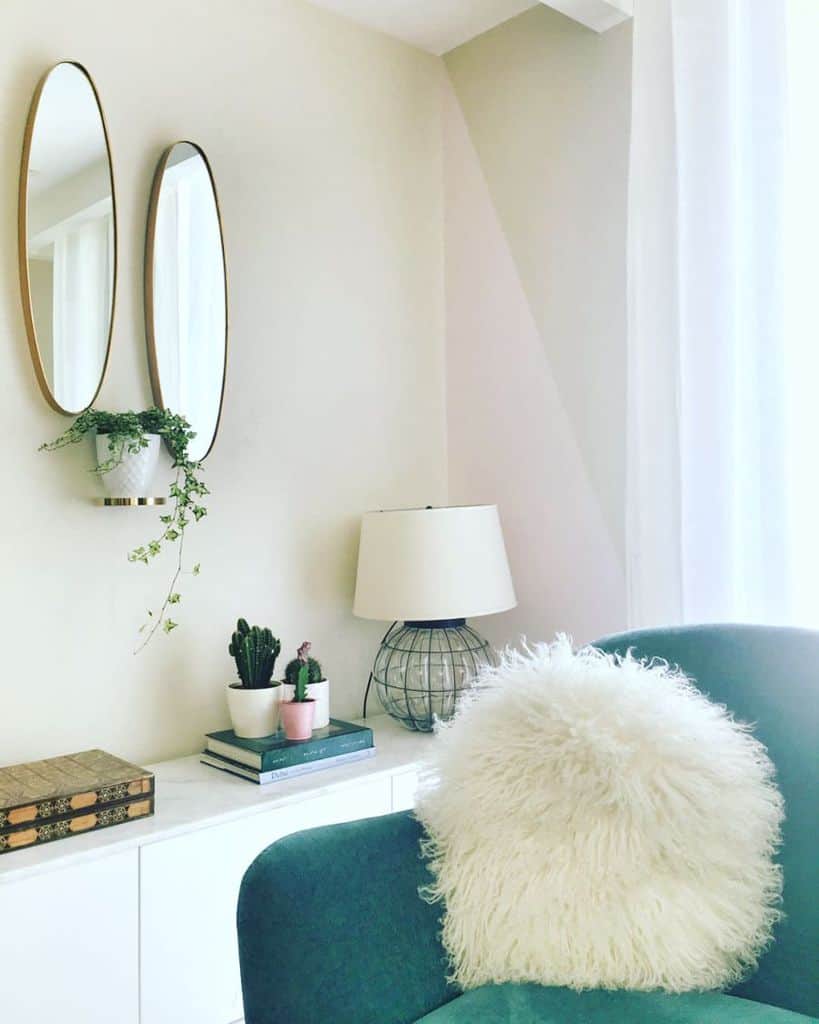
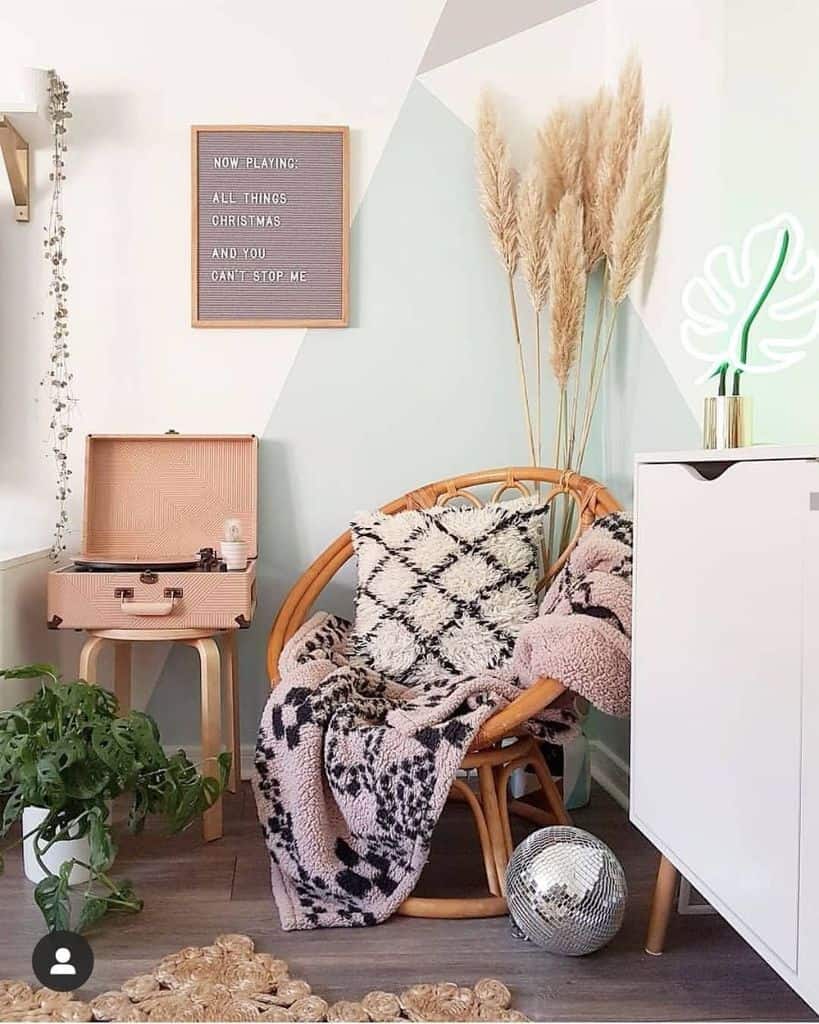
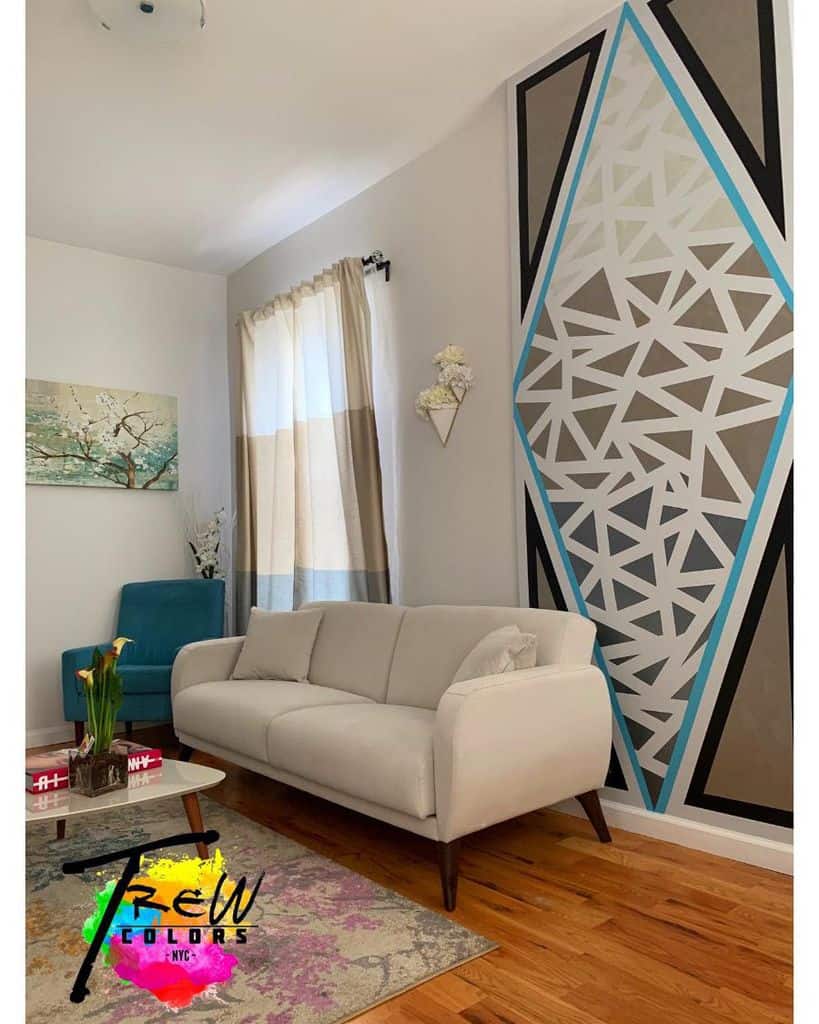
8. Unconventional Inspirations
Interior designers will tell you to add texture to the room. The standard way of doing this is by choosing textured materials for the decor. But did you know you could create texture with your living room wall paint? These are a few paint treatments you can do to create texture while painting.
Color washing will give depth to your walls. Paint a satin base over the entire wall and use a large brush to wash a glaze over the wall. You could try the “strie” technique, which is French for streaking. The finished look resembles linen. Rag rolling and sponging are traditional methods for adding texture and depth to your walls. Both create a varied and random pattern. Just be careful with these two techniques. If done wrong, you’ll make your living room look outdated and old.
Another unique finish you can do is metallic. This gives your paint a metal-type finish for a bold statement. A silver metallic finish will give your room a cooler feel. Gold will create a warmer effect.
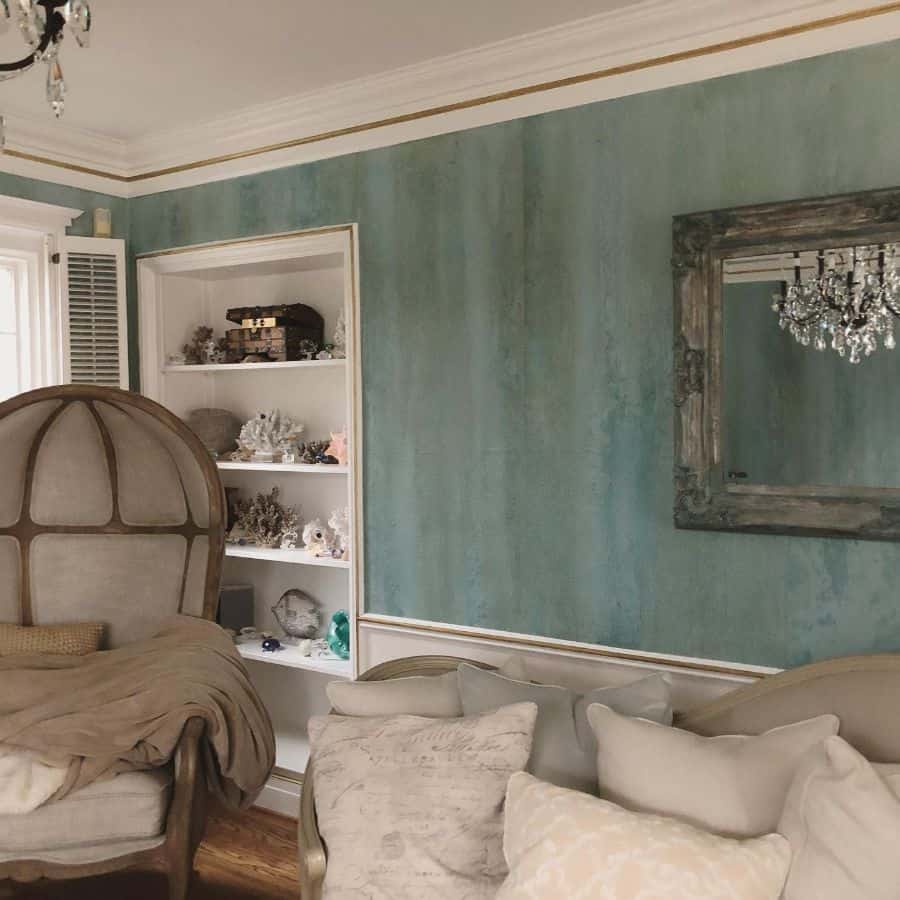
9. Understated Elegance
White living rooms photograph well and are beautiful inspirations. However, consider the practicality of a white or cream living room in your home. If you have messy pets or children, then this may not be the best choice for you. However, you can still have hints of white by using white paint.
Try pairing your white walls with colored decor. You could have a darker rug that will hide spills and dirt. Then choose furniture in other neutrals for a calming, yet bright space.
White can look stark, cold, and almost too bright. If you agree with this, consider warming up the room by skipping bright white and using an off-white or cream color. This paint will have hints of yellow, pink, or beige. This gives the room a subtle warmth.
Another idea is to take a sleek and ultra-modern approach. Paint the walls a crisp white and then pair it with black accents. You can paint the crown molding and trim in black. This scheme defines the space, and the black trim creates a stunning visual effect.
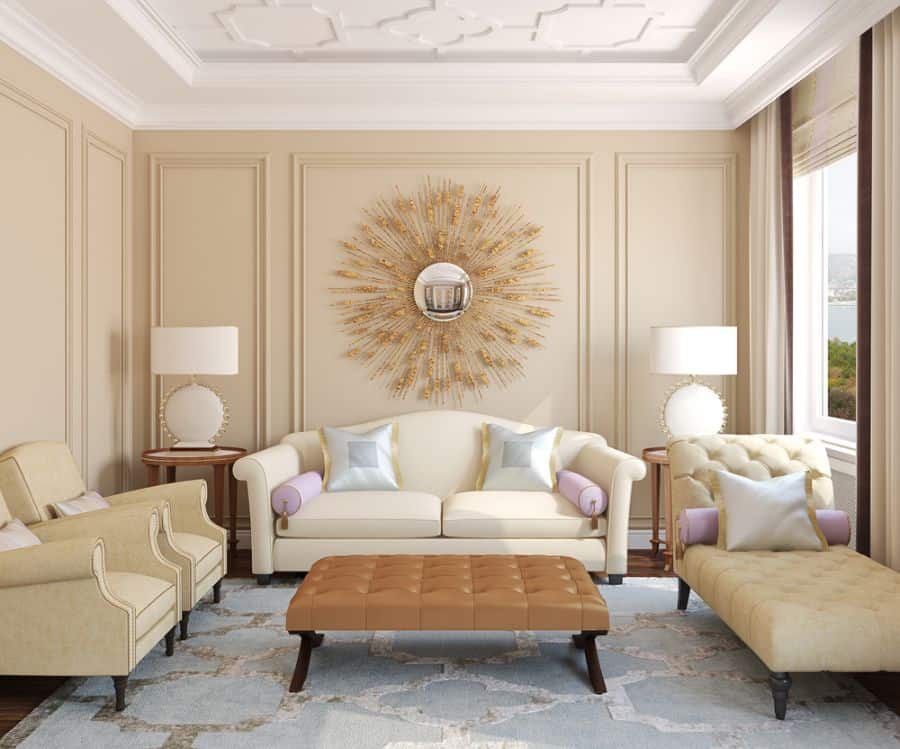
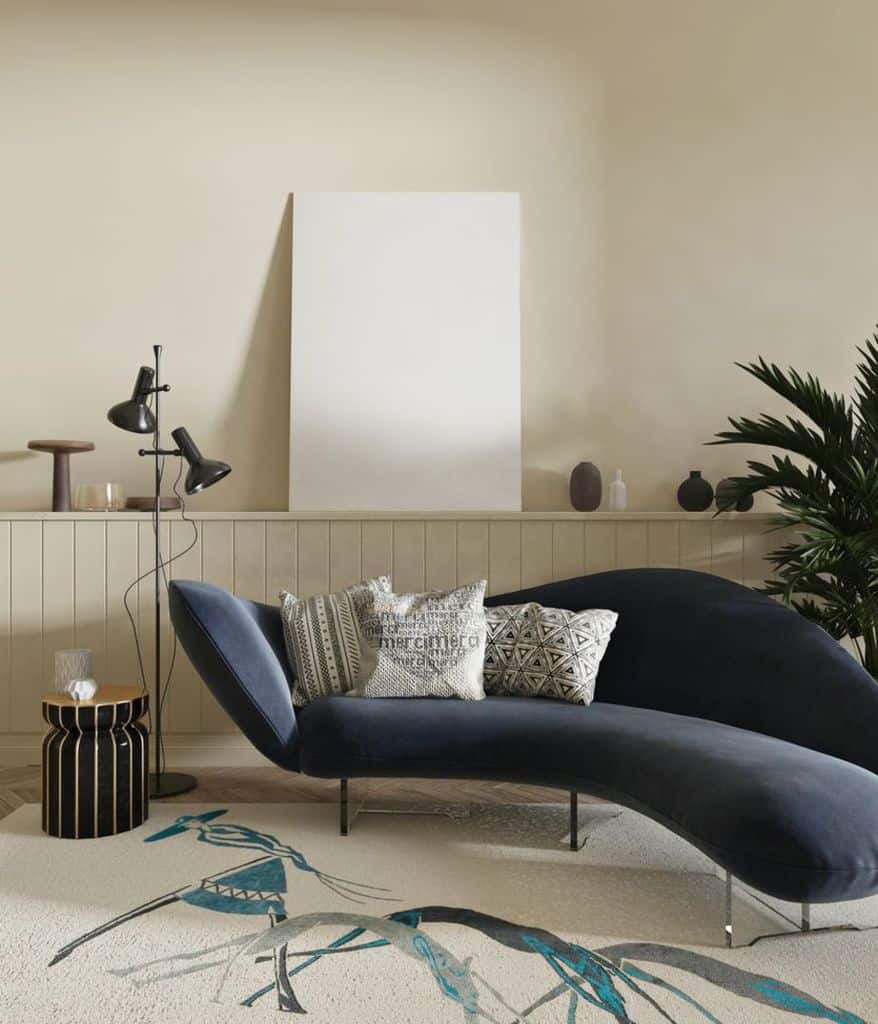
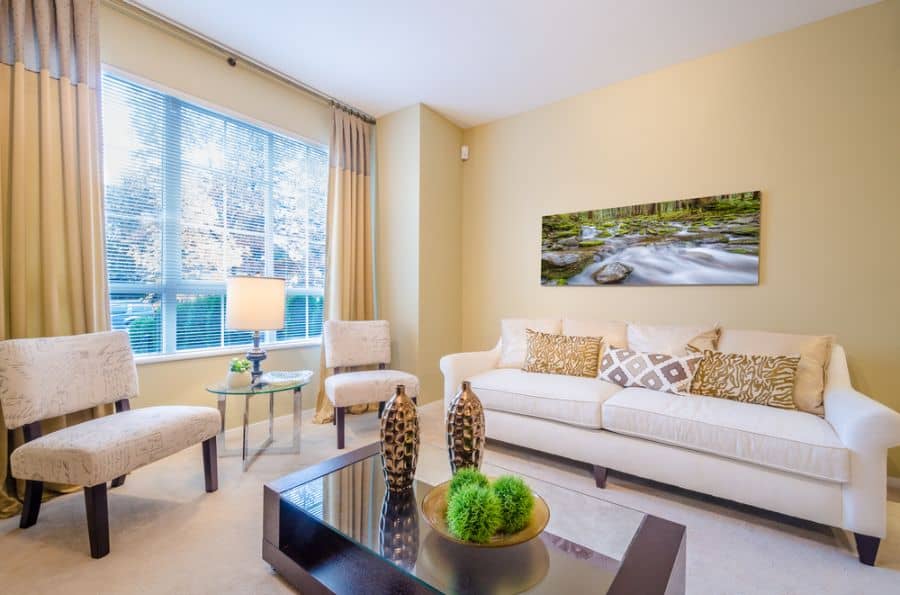
See more about - 98 Black And White Kitchen Ideas
Living Room Paint FAQs
The best color for your living room is one that you love. You have to look at it every day, so it doesn’t matter so much what the popular living room colors are. If you’re having trouble choosing a color, you can’t go wrong with white, off-white, beige, other neutral colors, grey, blue, and green.
Choose a white or off-white paint. Your walls will reflect the most amount of light, which will make your living room feel larger. For an extra boost, paint your living room’s trim and moldings a shade lighter than the actual wall. This will create a visual effect where the wall appears further back, making the room seem bigger.
Once you have a color chosen, you’ll need to buy the actual paint. There are several finishes to choose from. If your walls are full of imperfections, then flat paint will be the best at hiding them. However, it’s also the least durable. If you need to clean or scrub your walls often, then this isn’t the best choice. Eggshell will give your walls a soft finish without a high shine and is also durable for cleaning.



